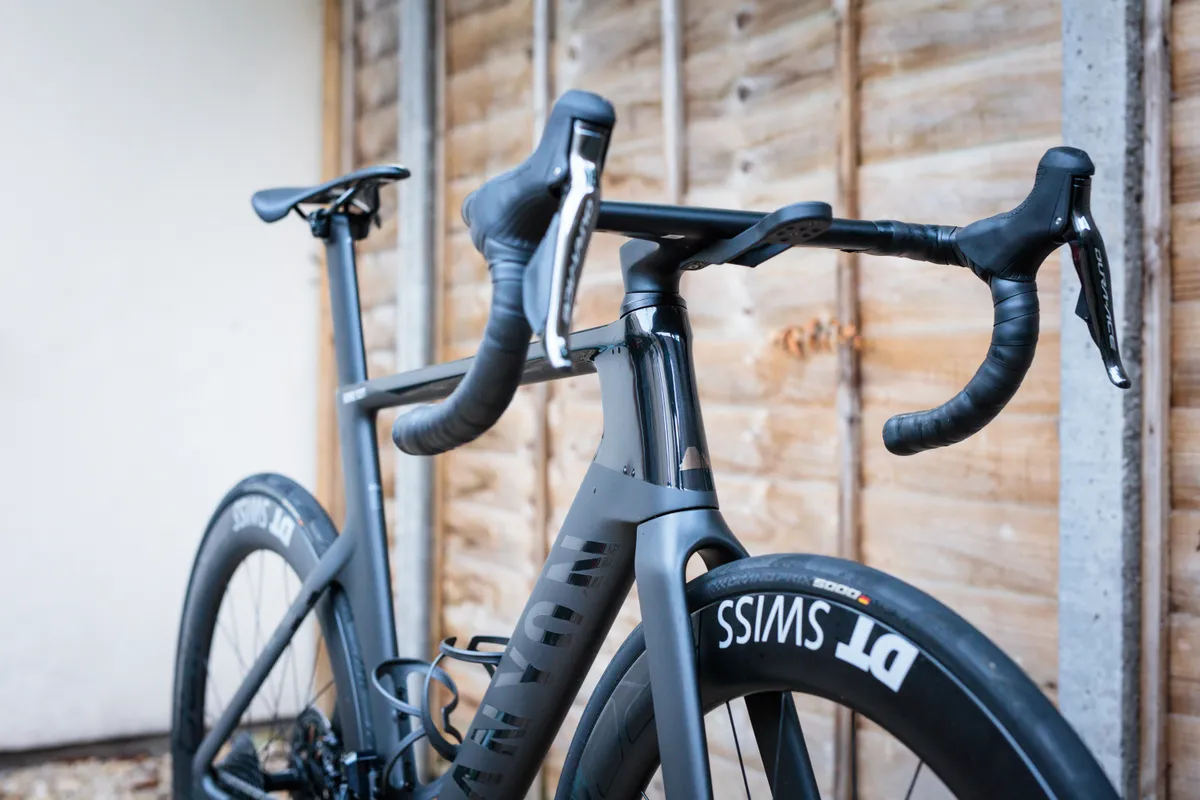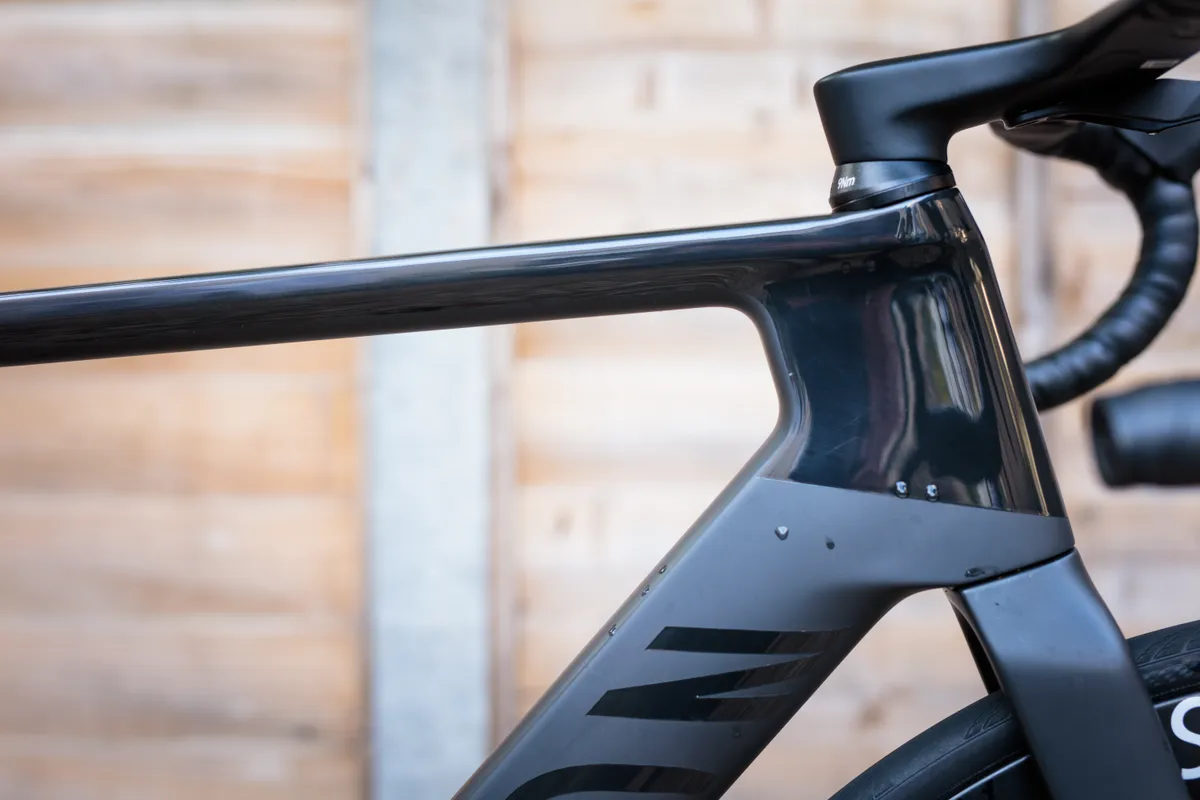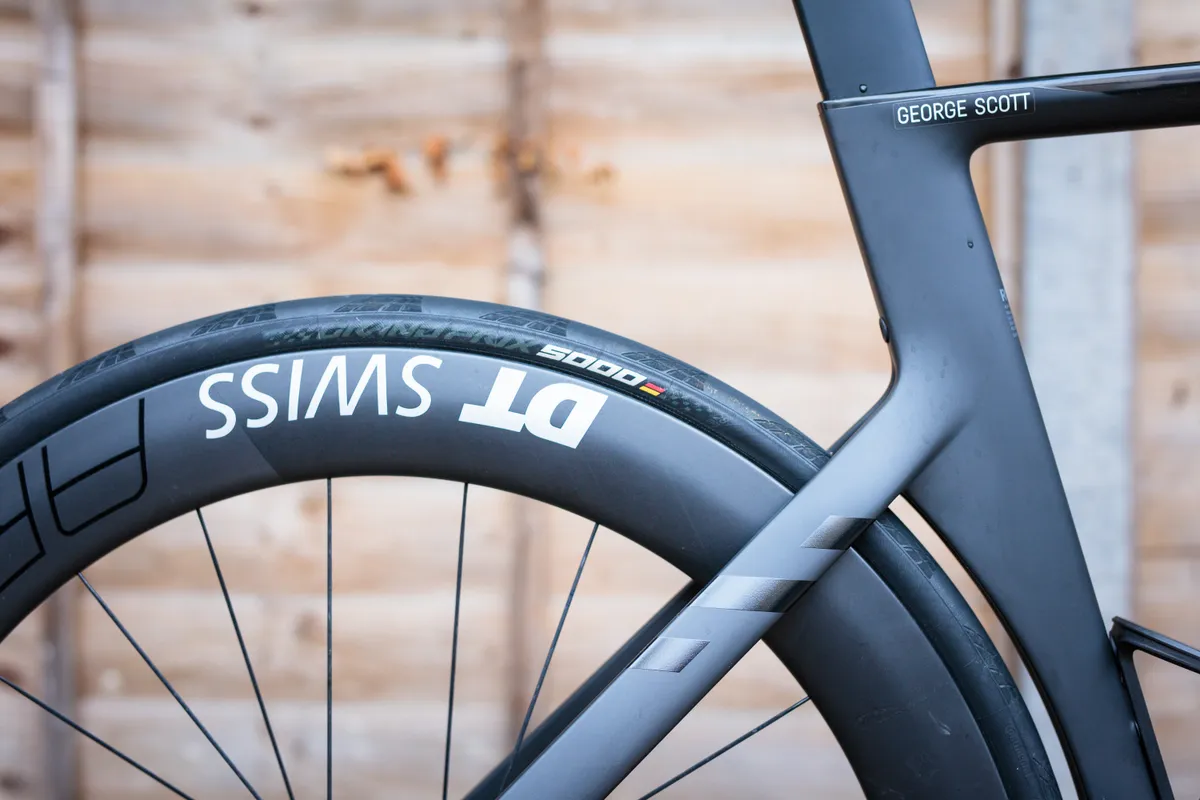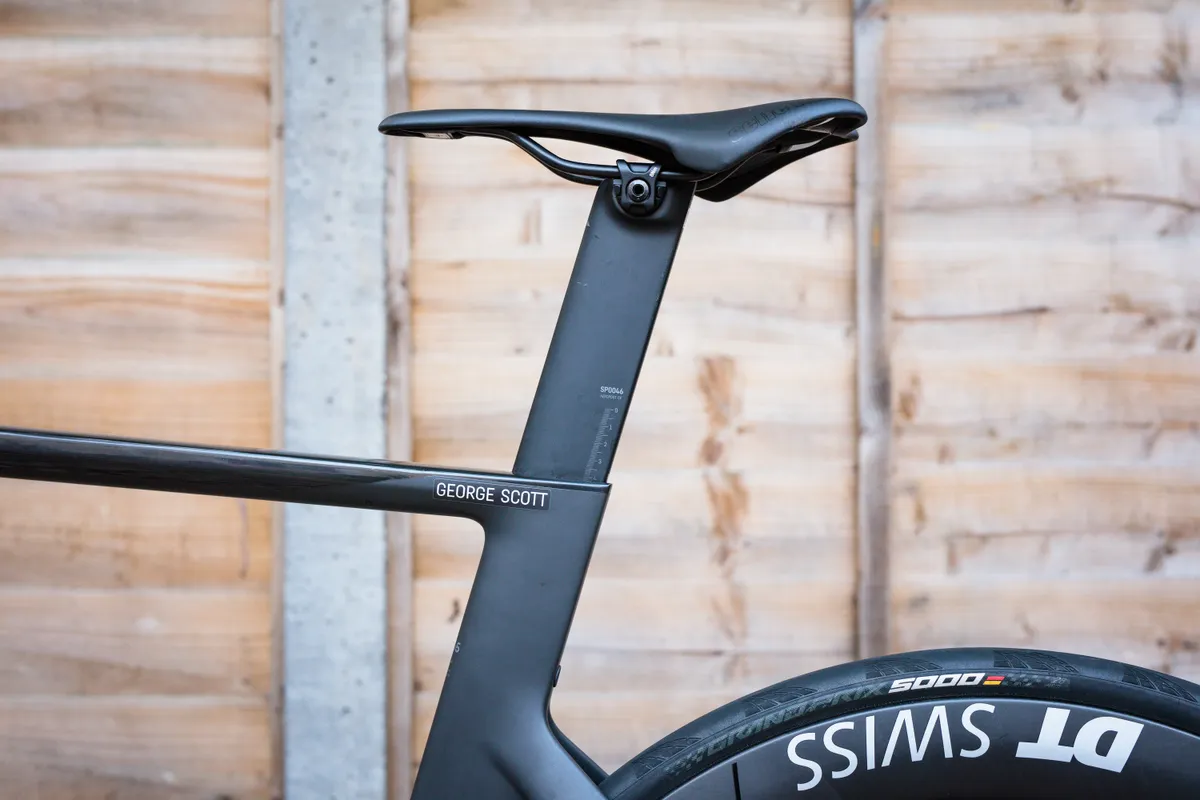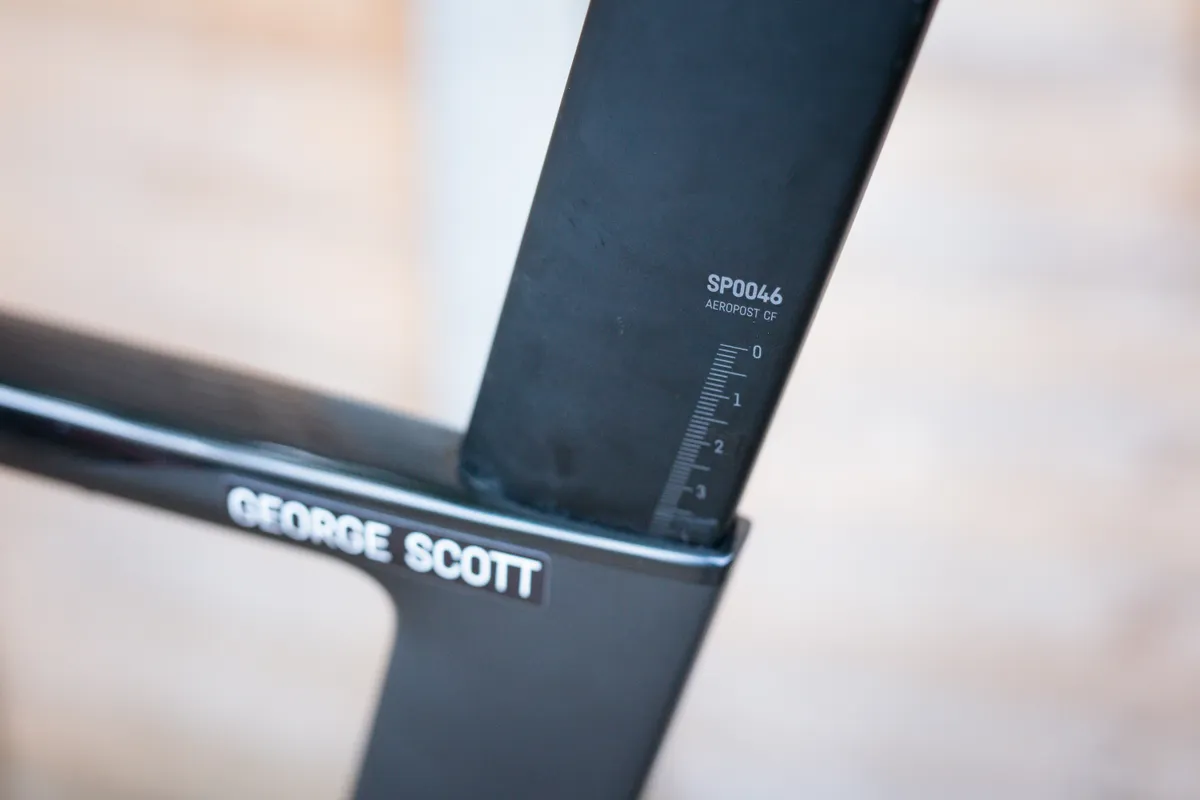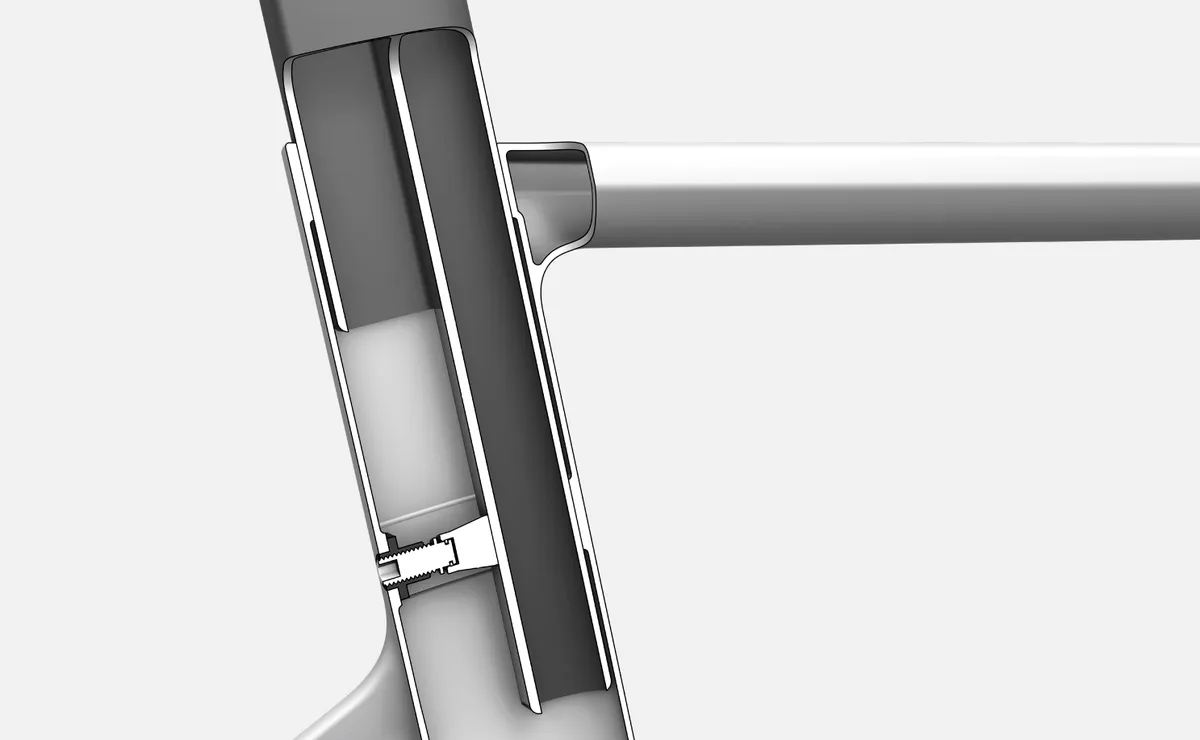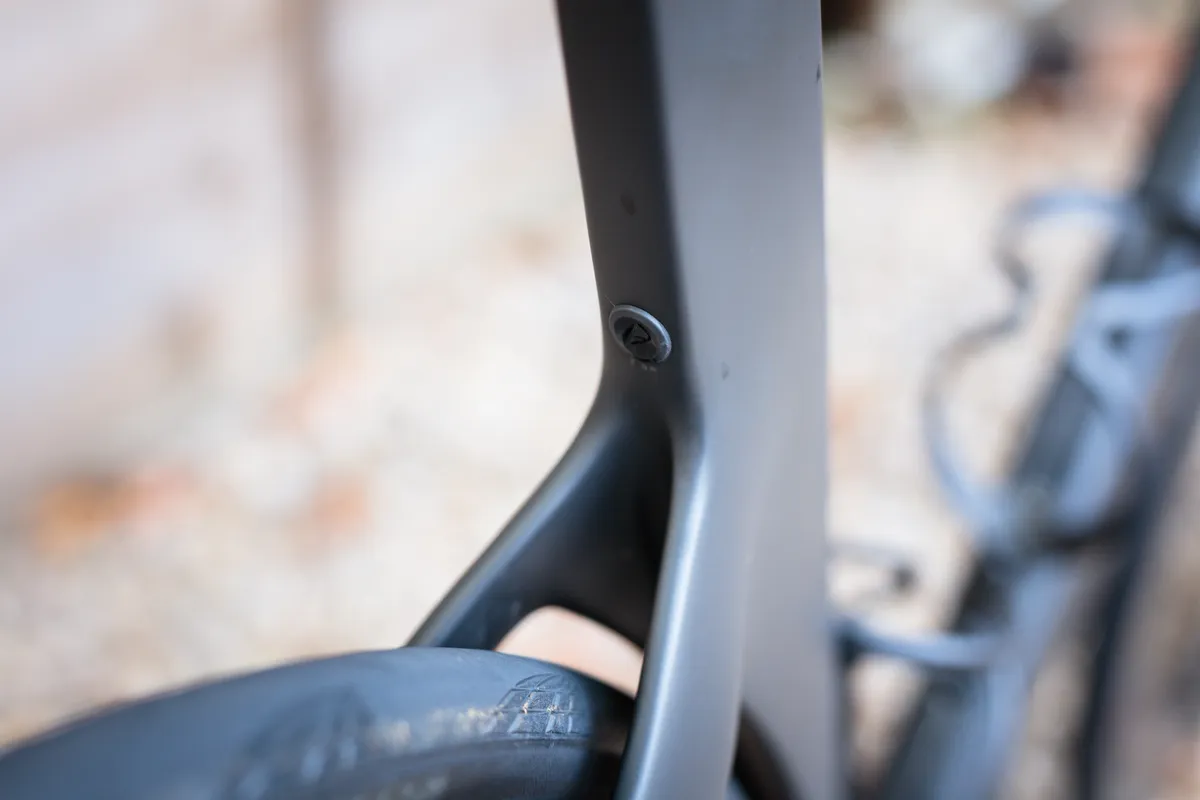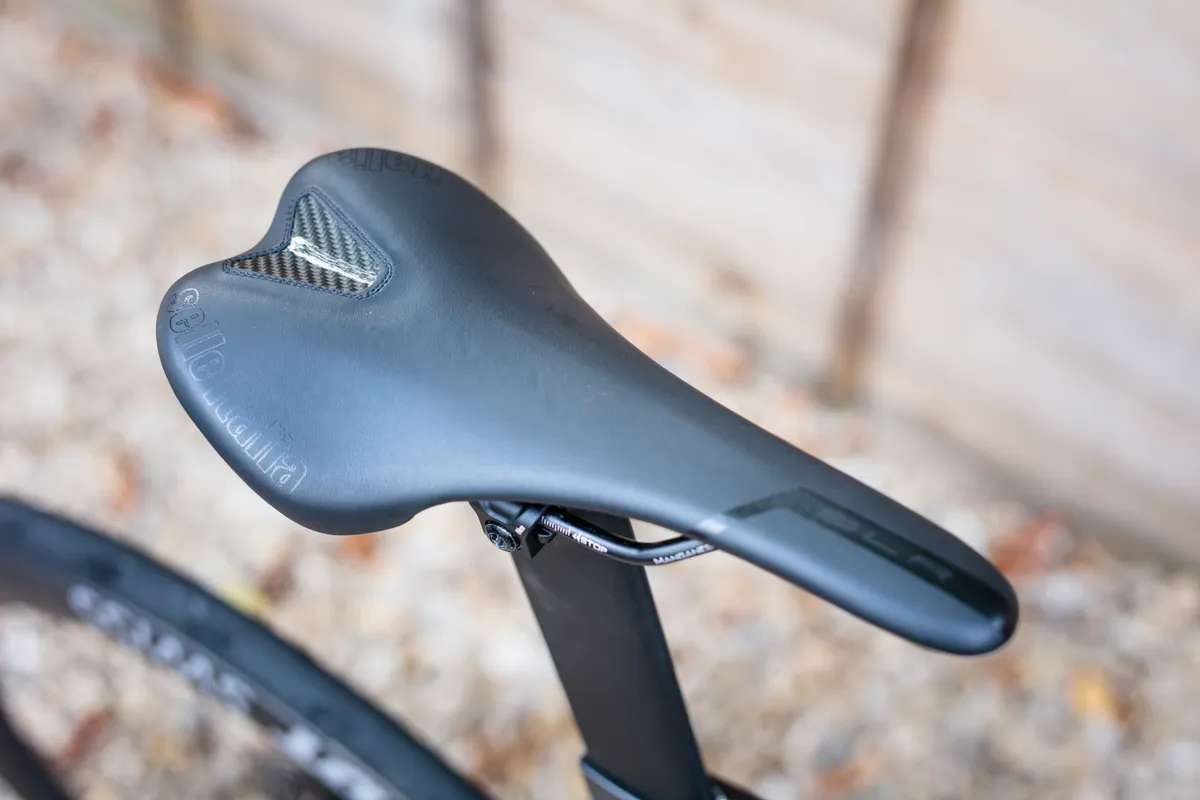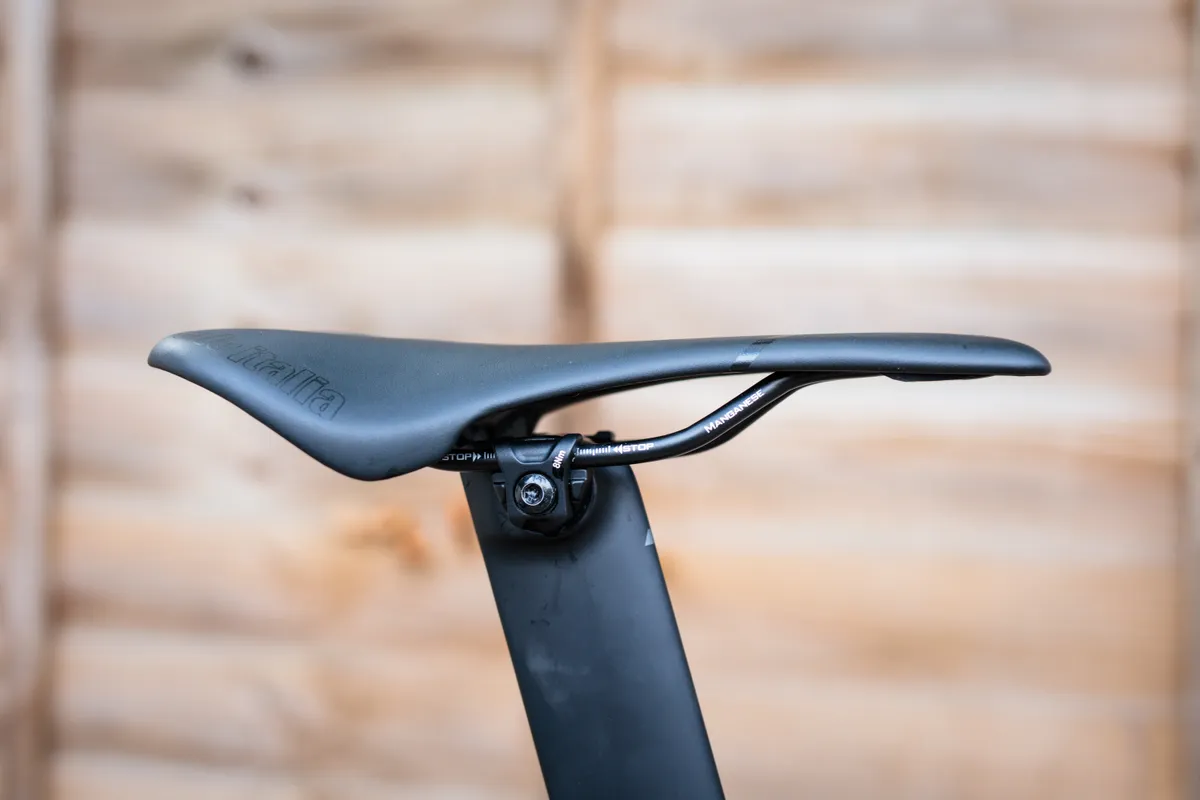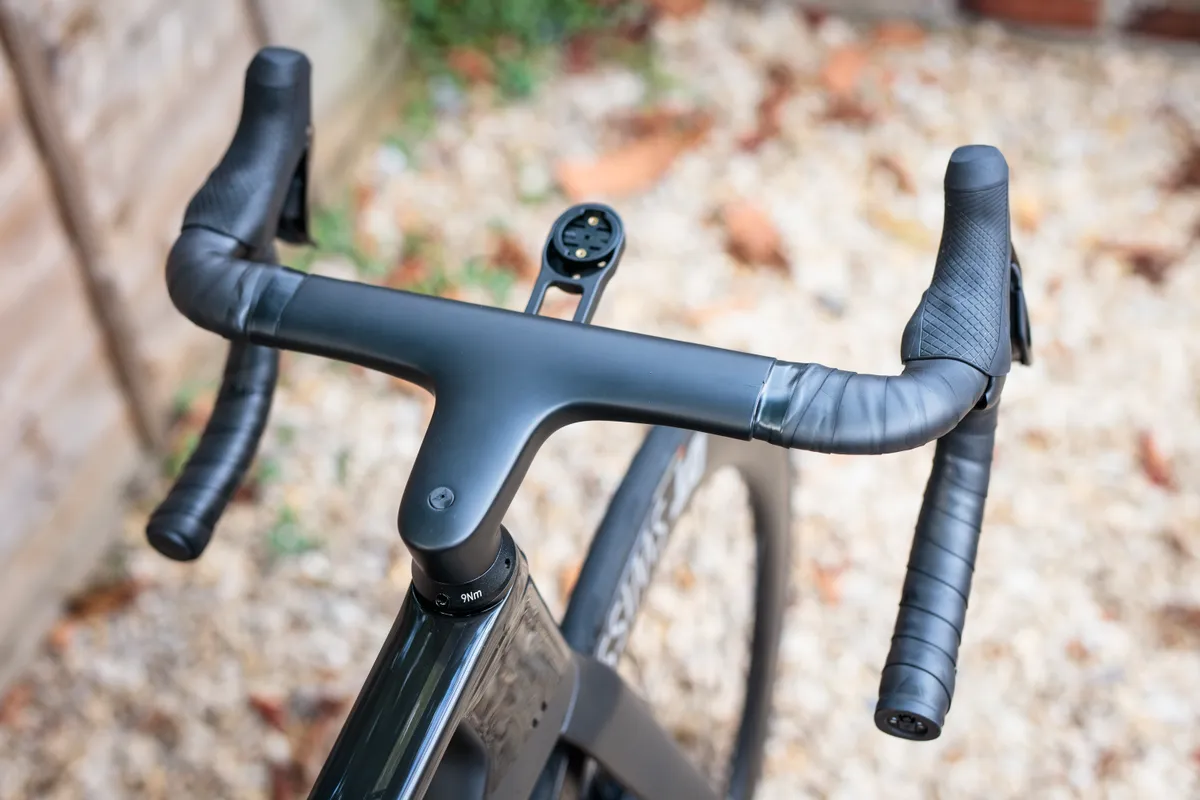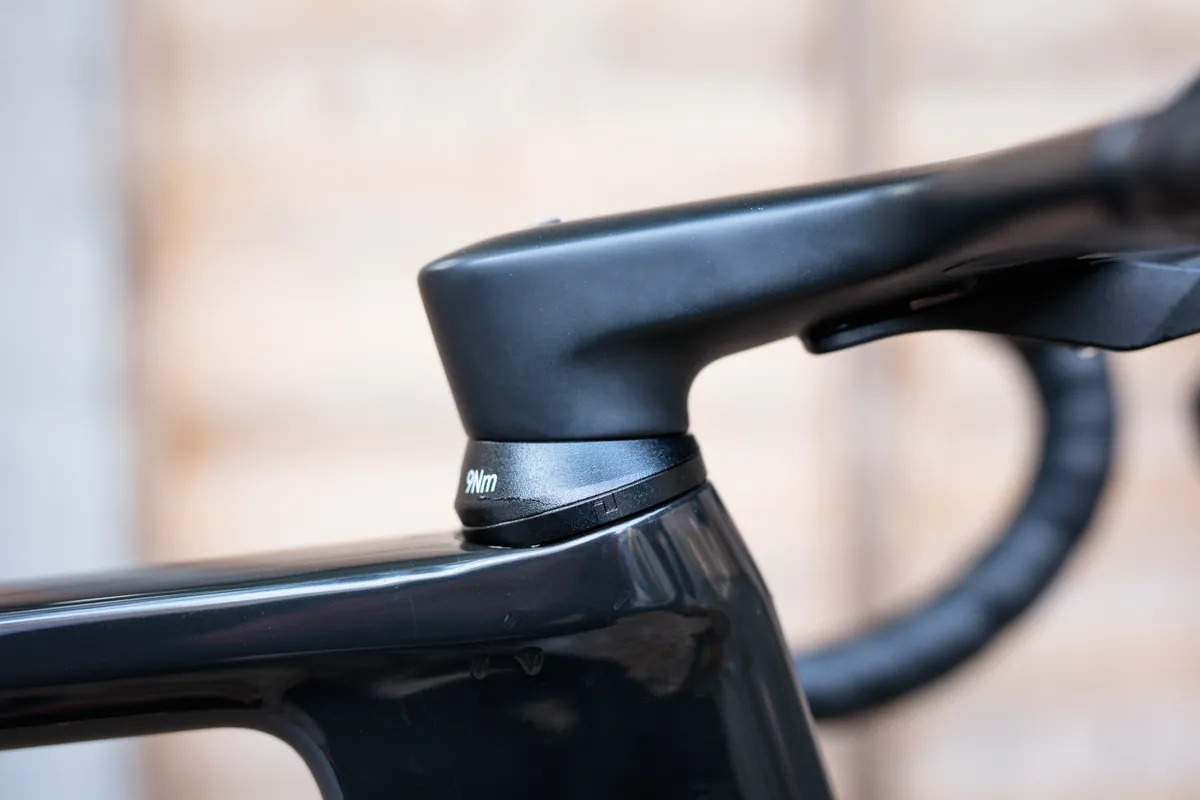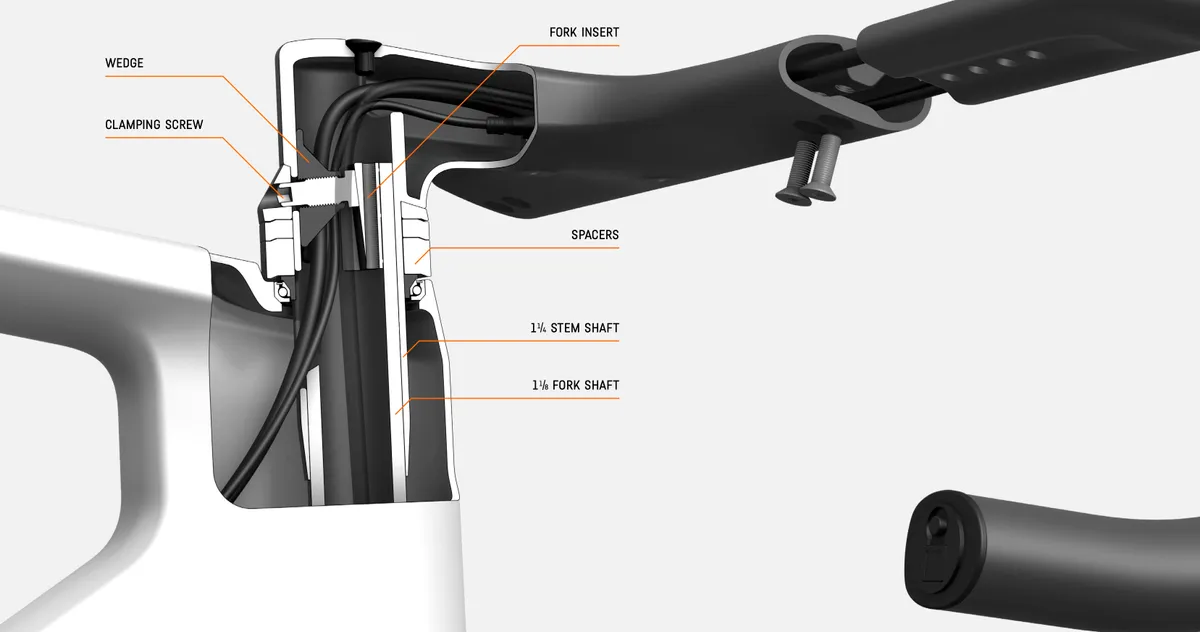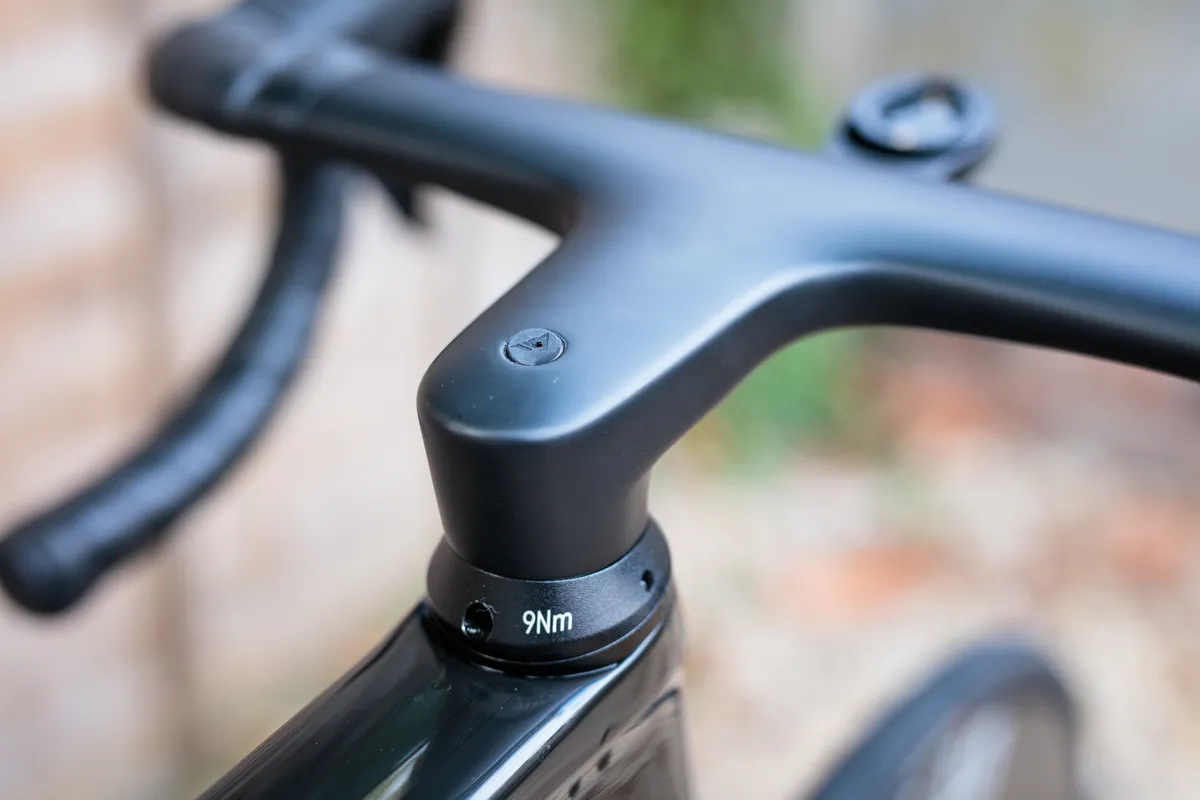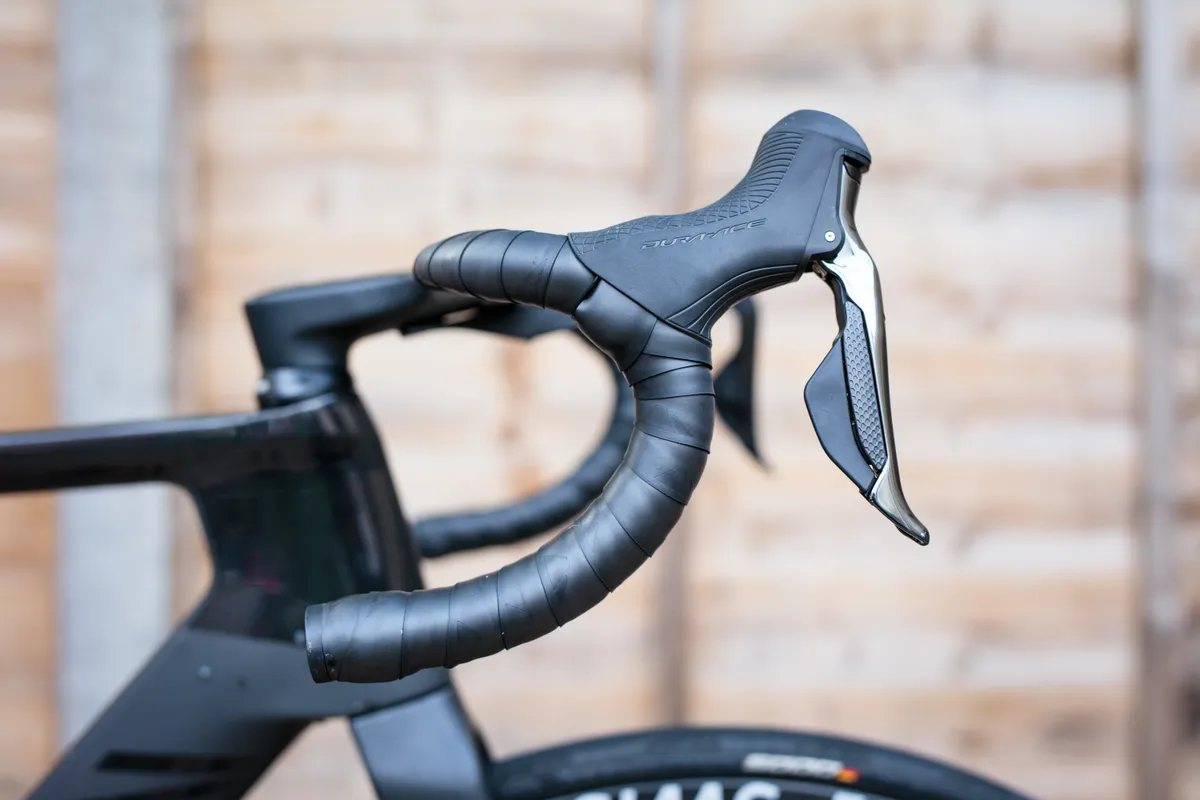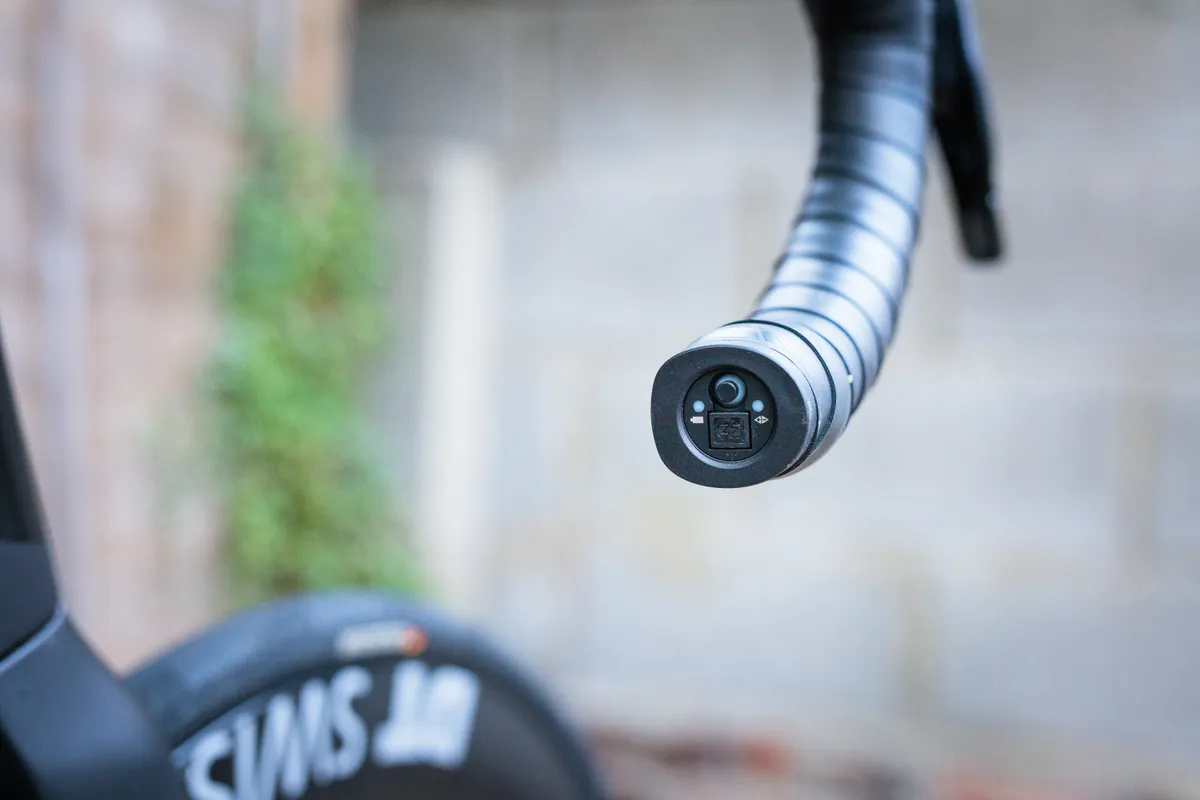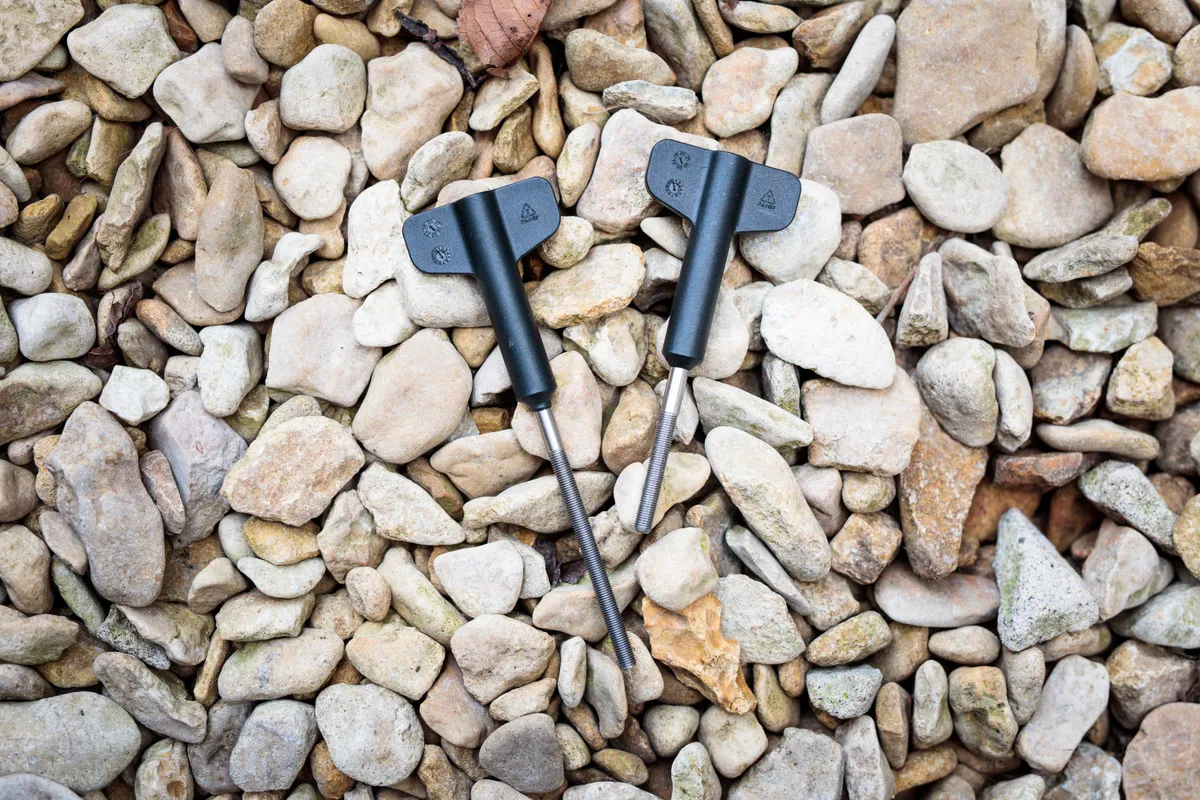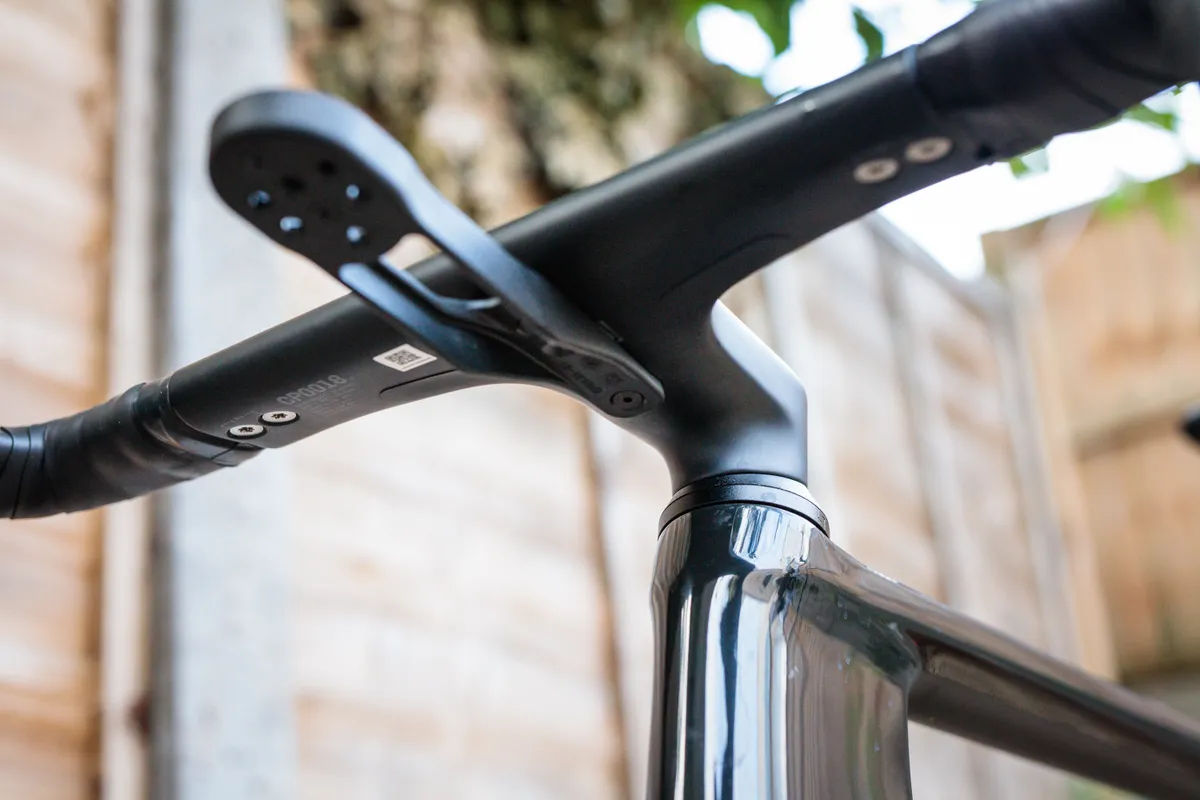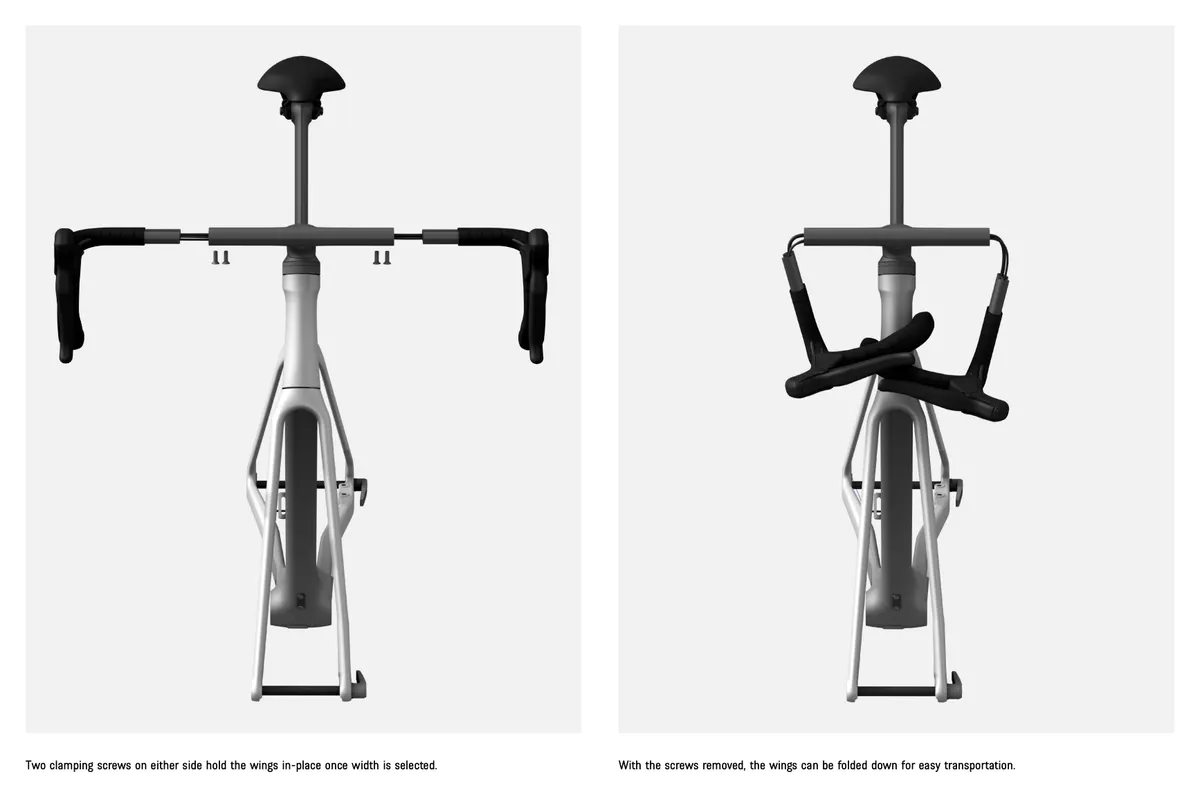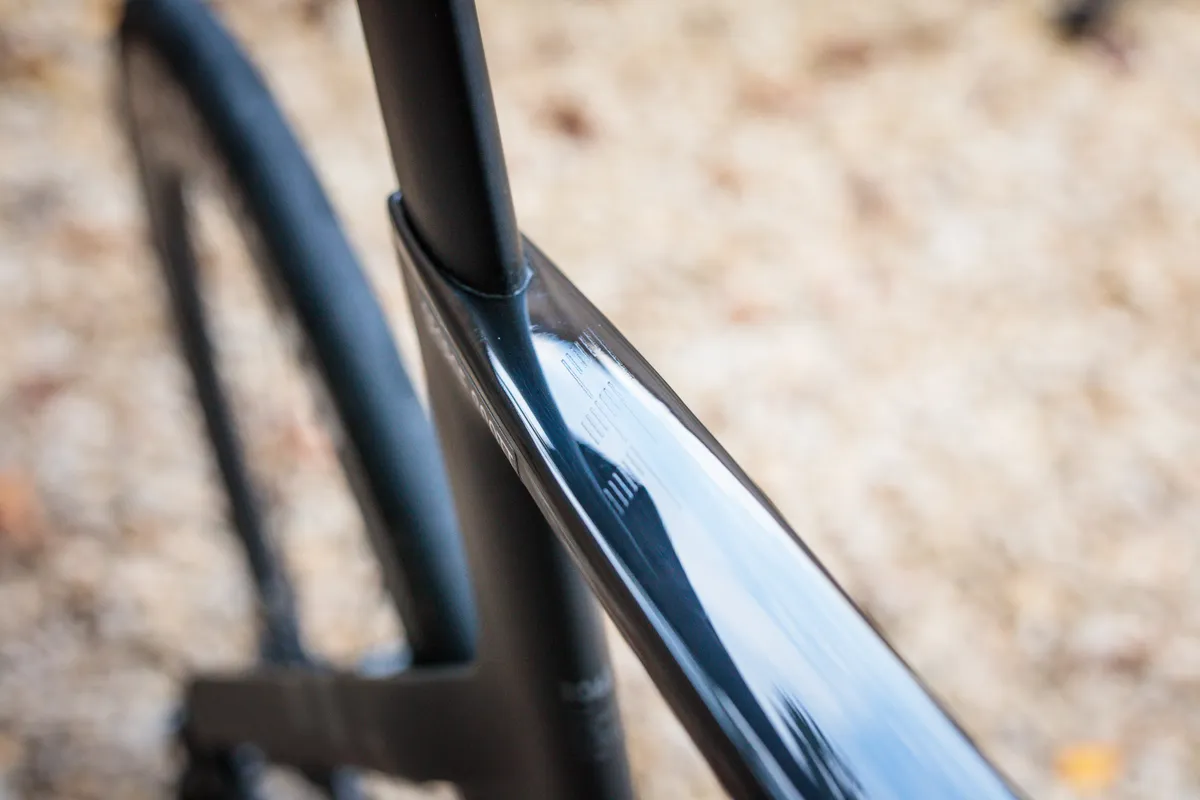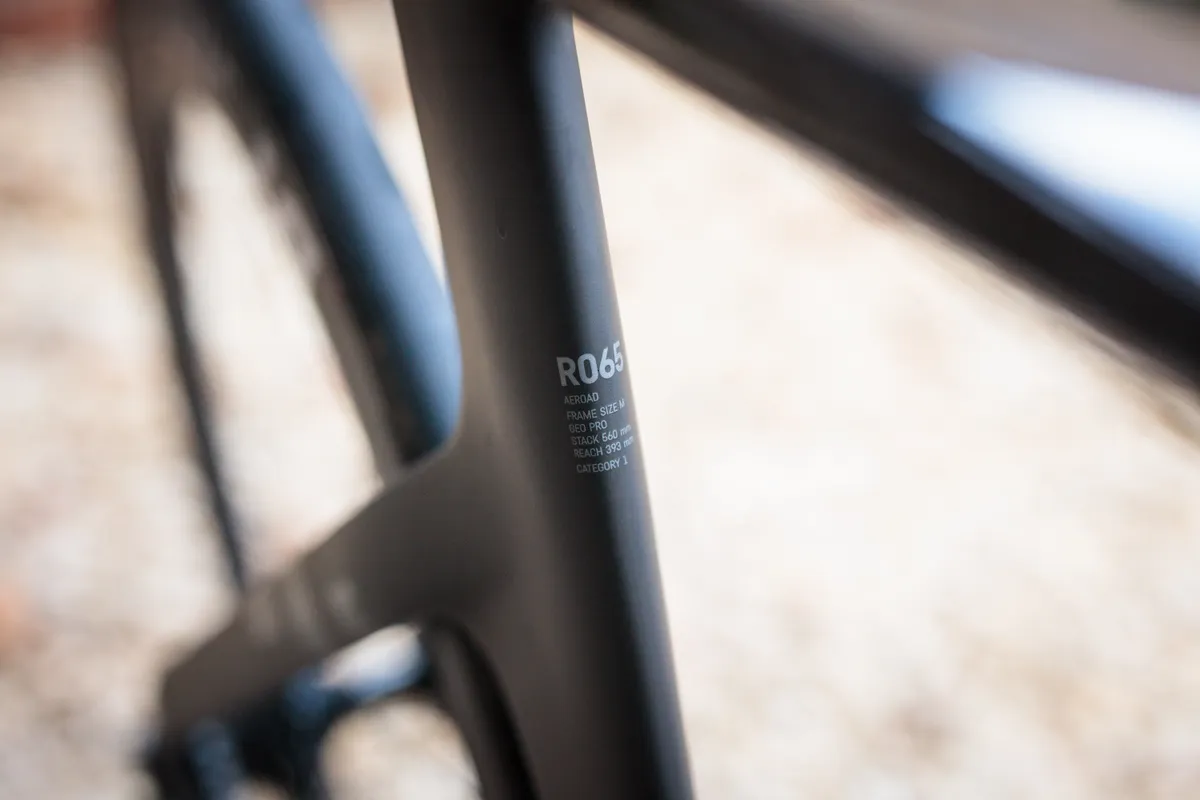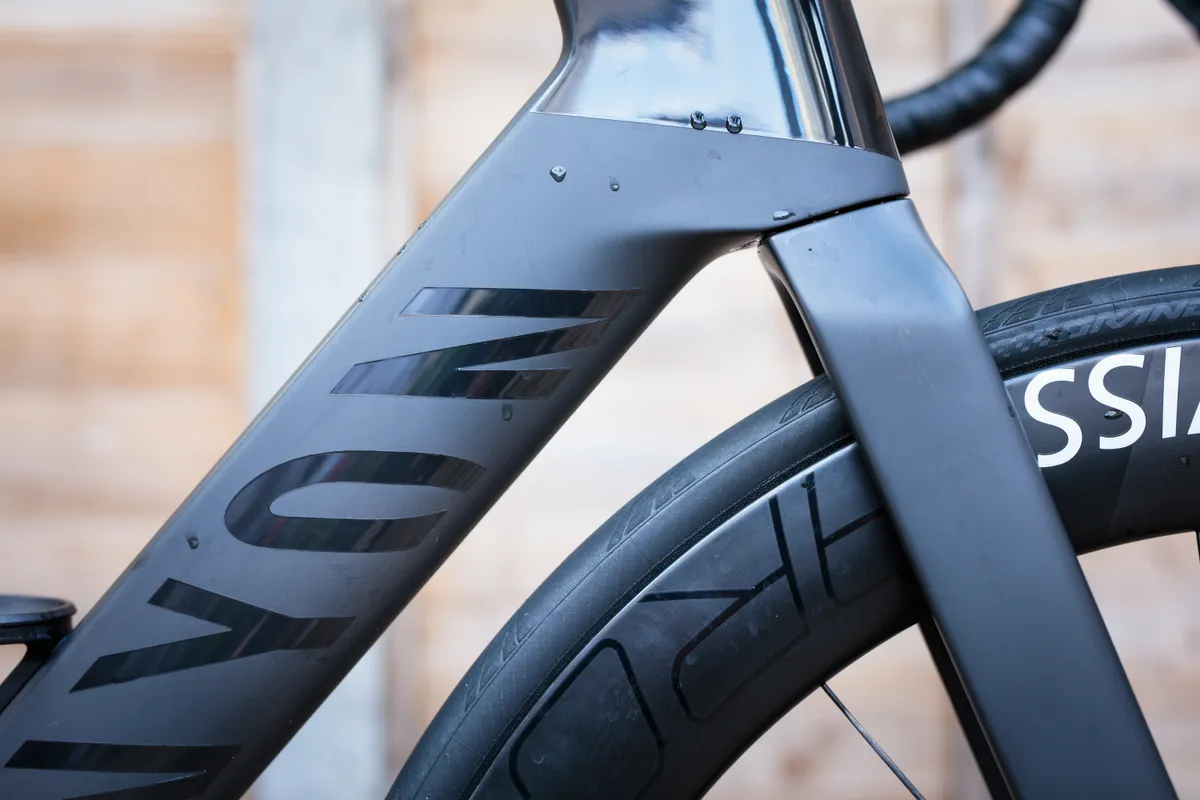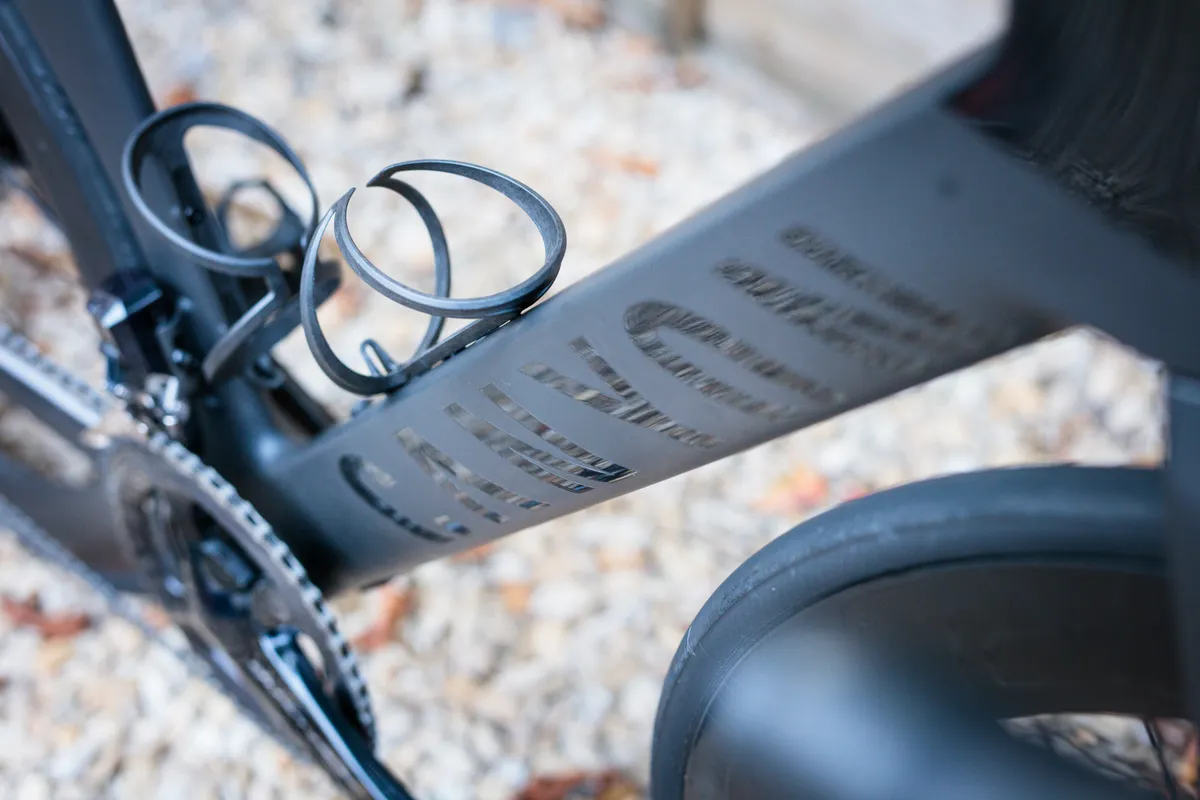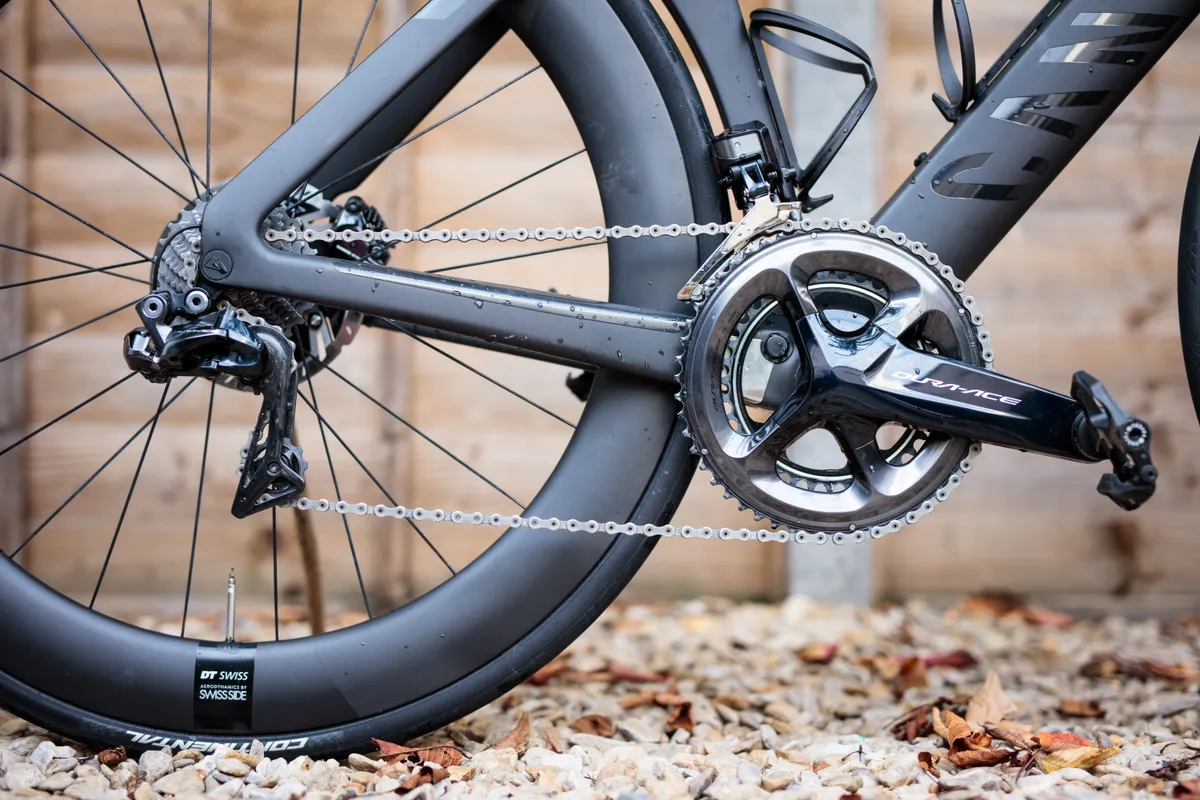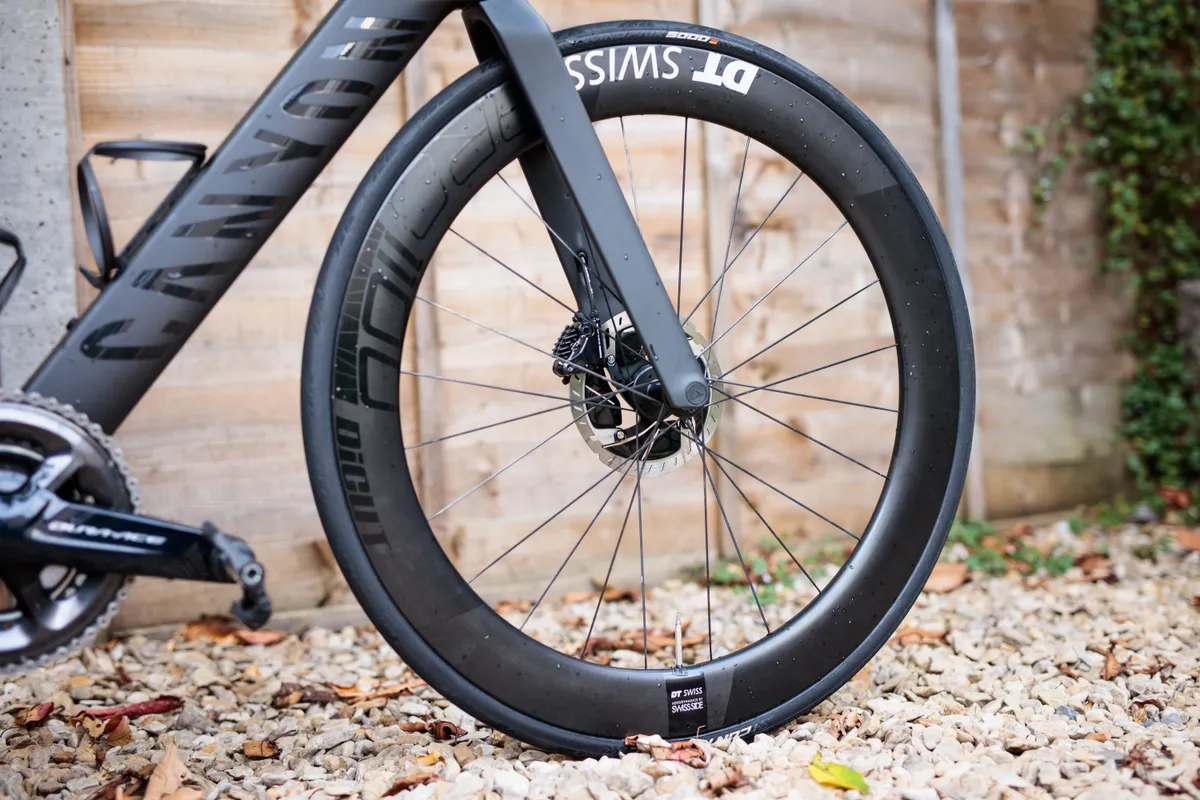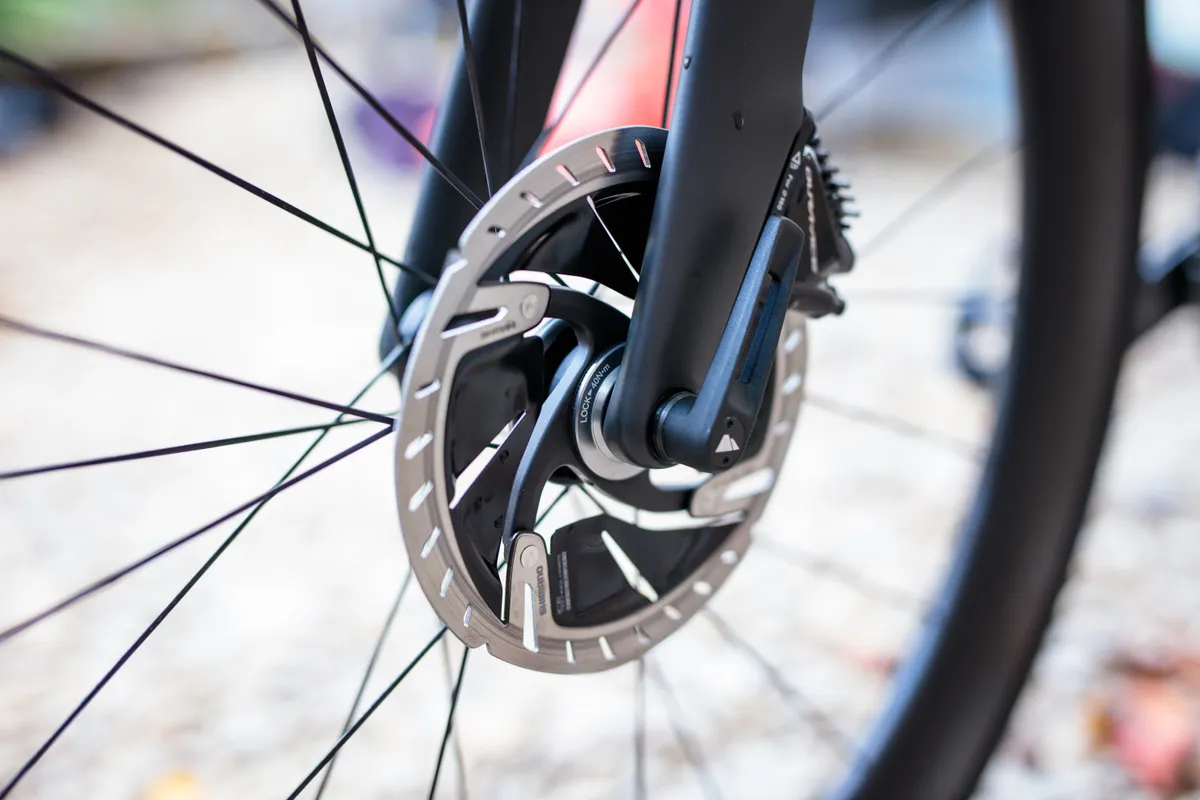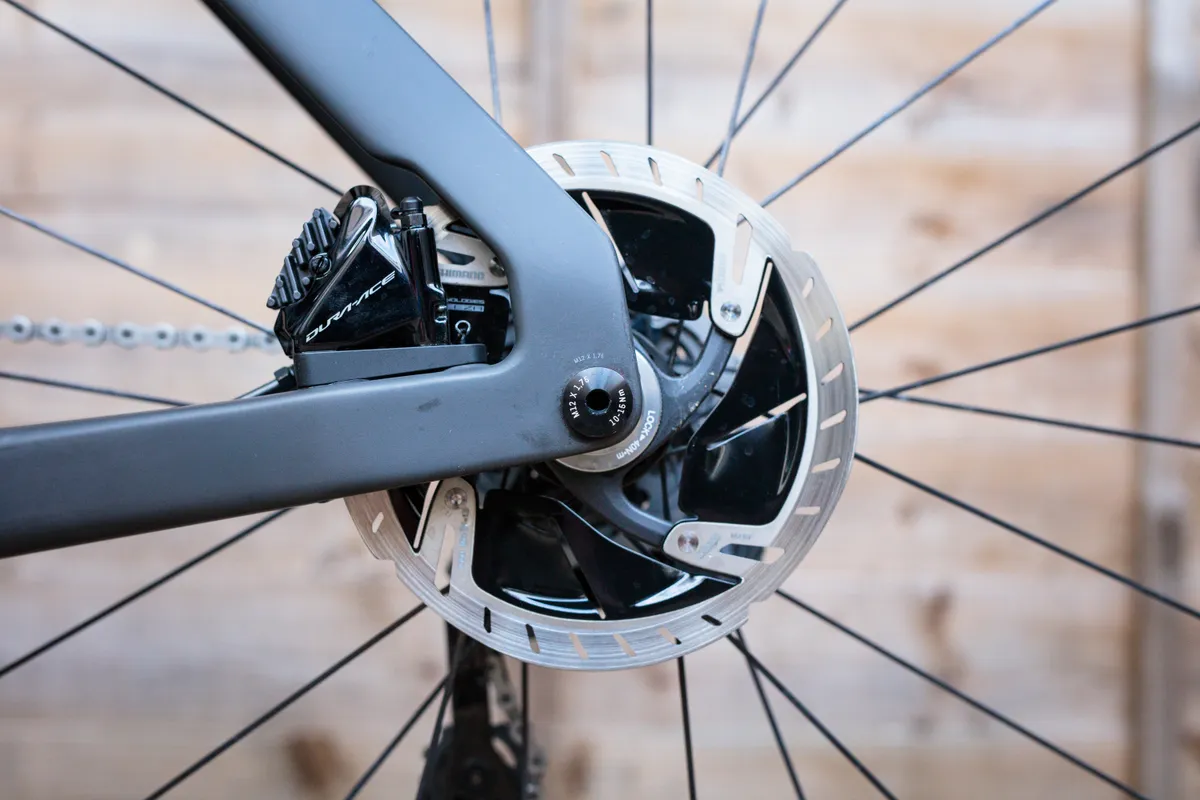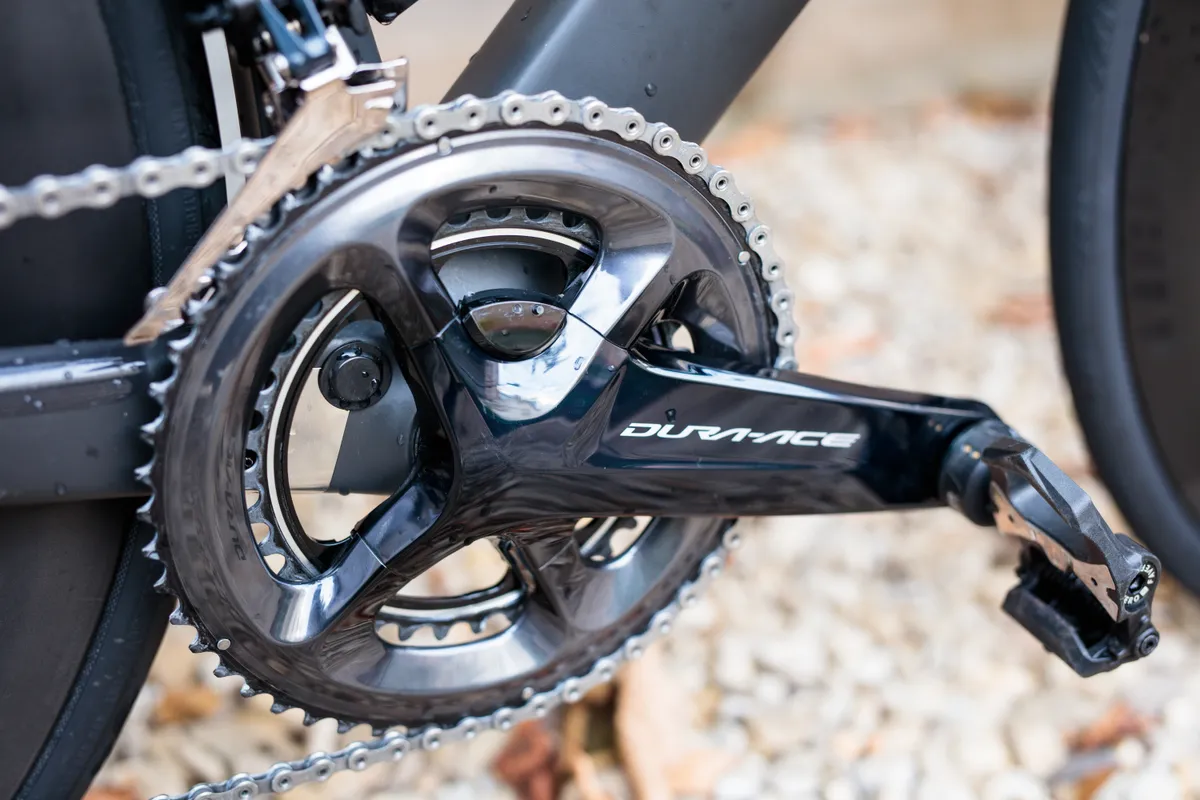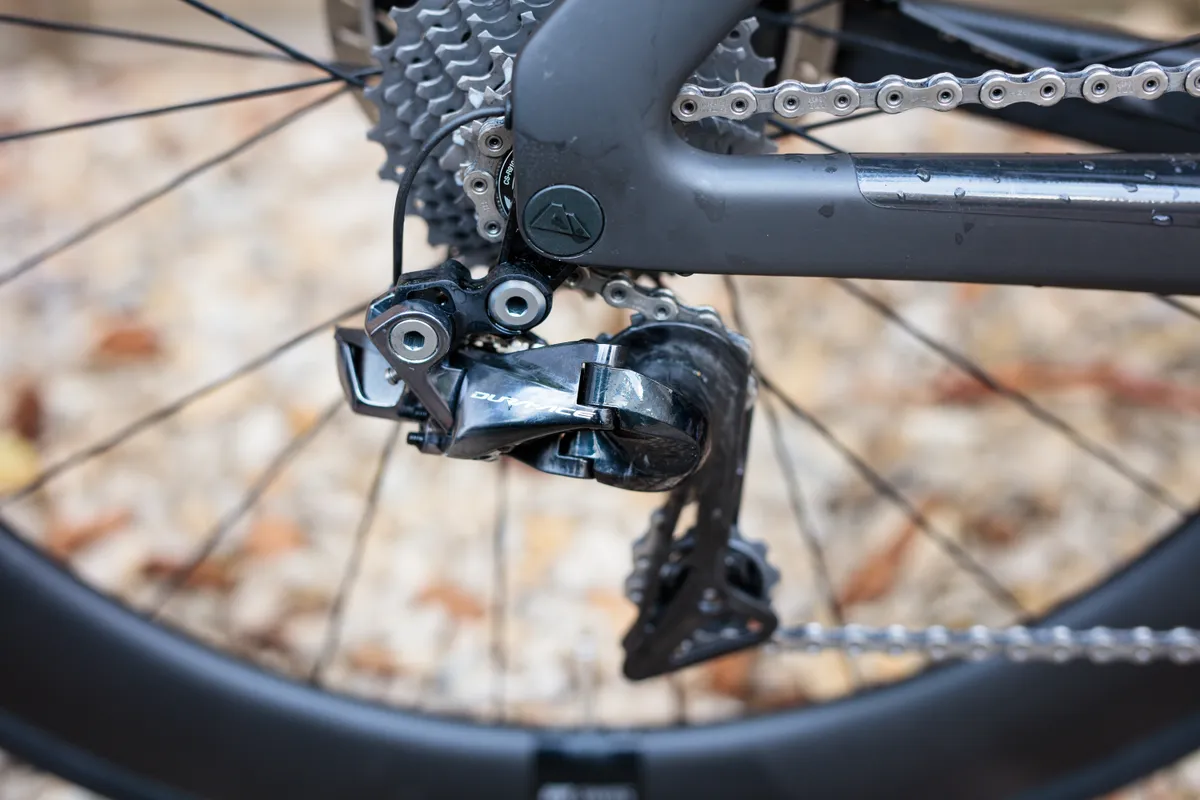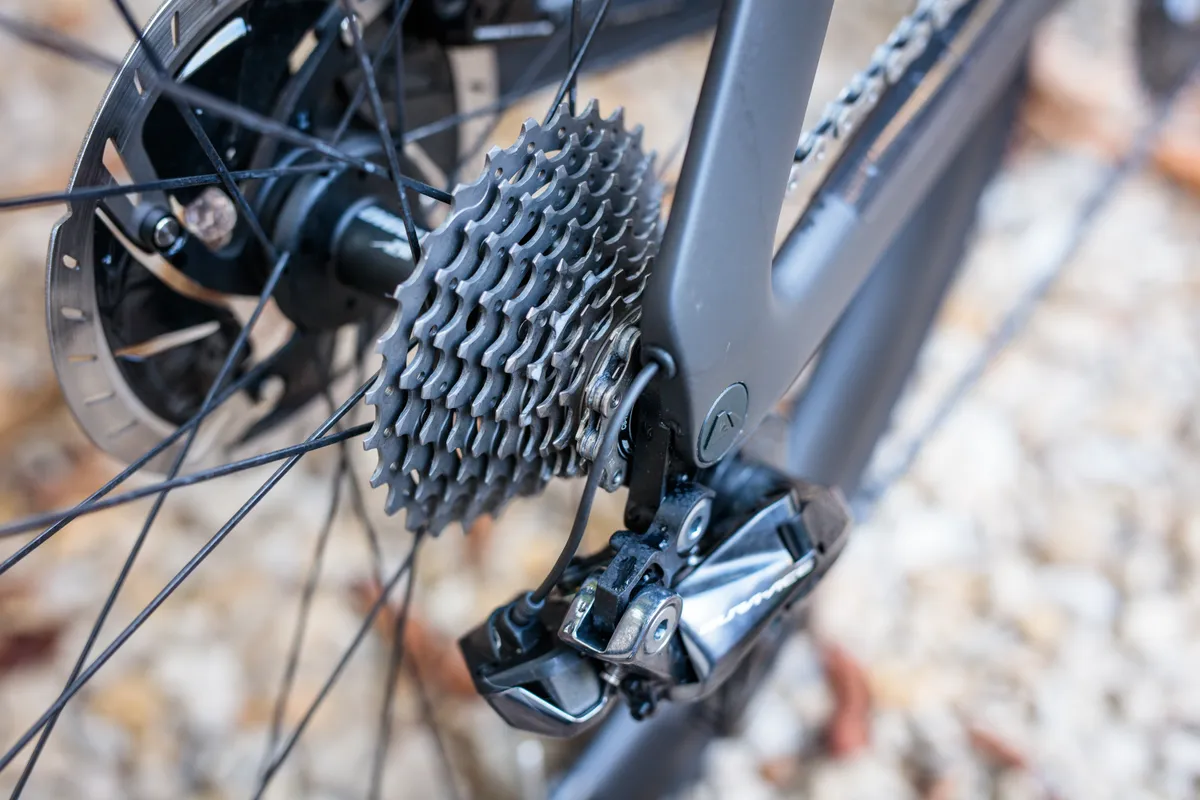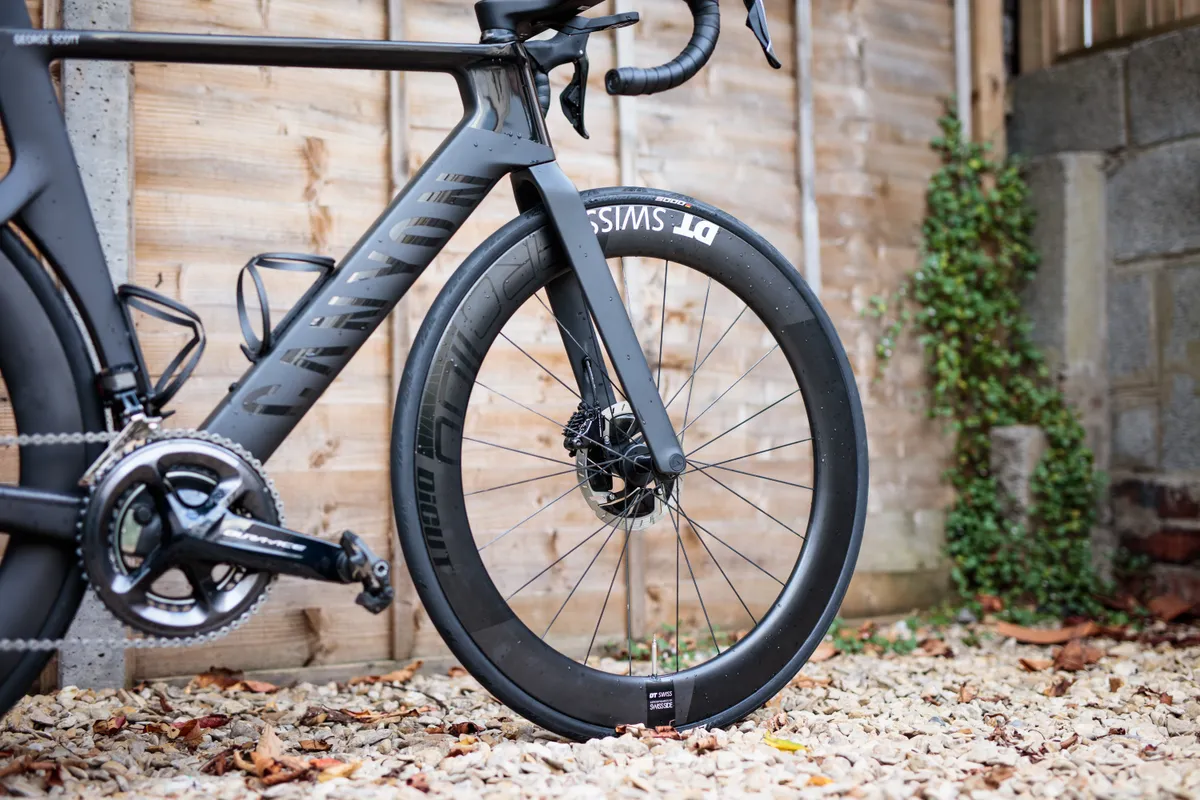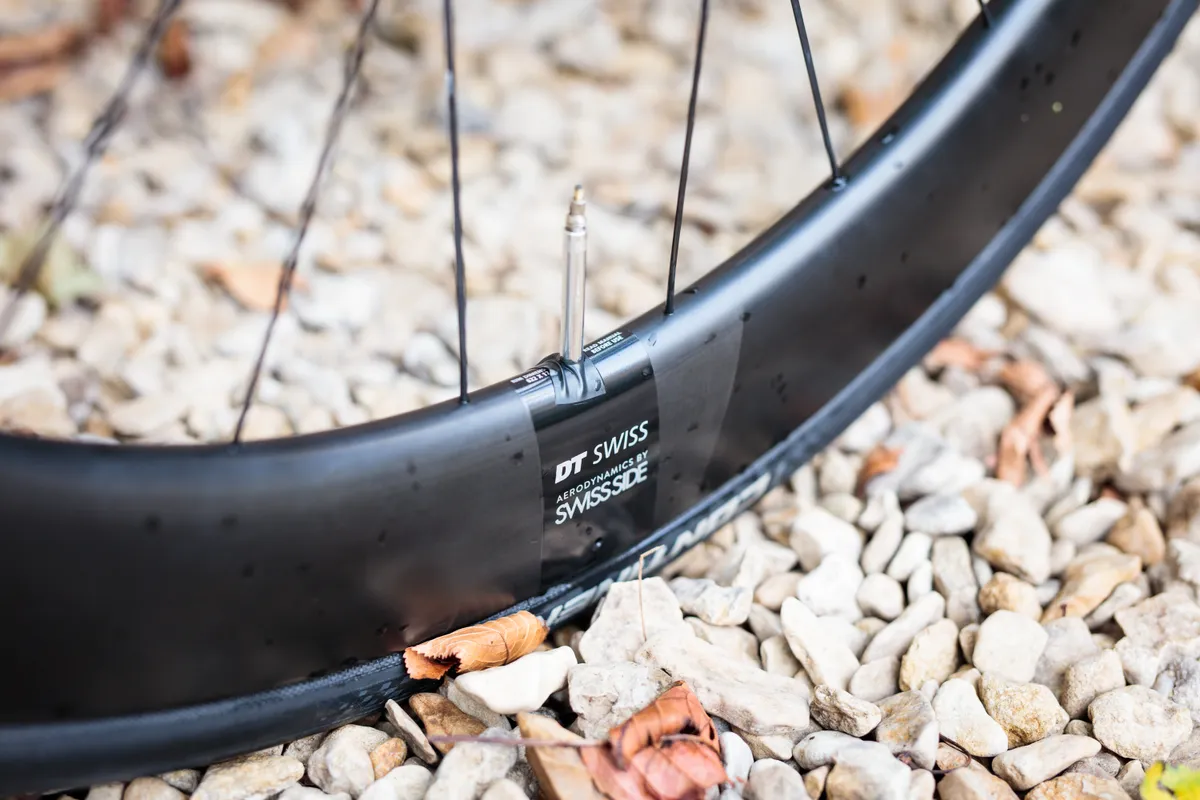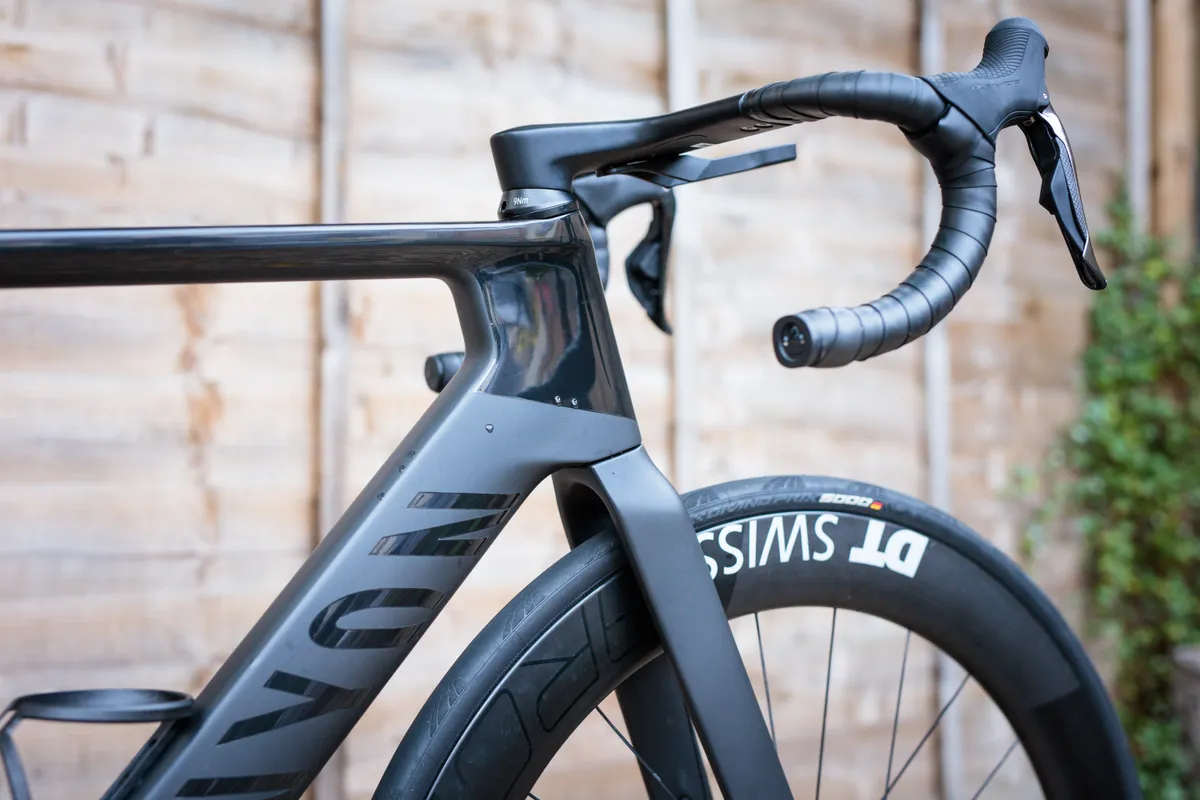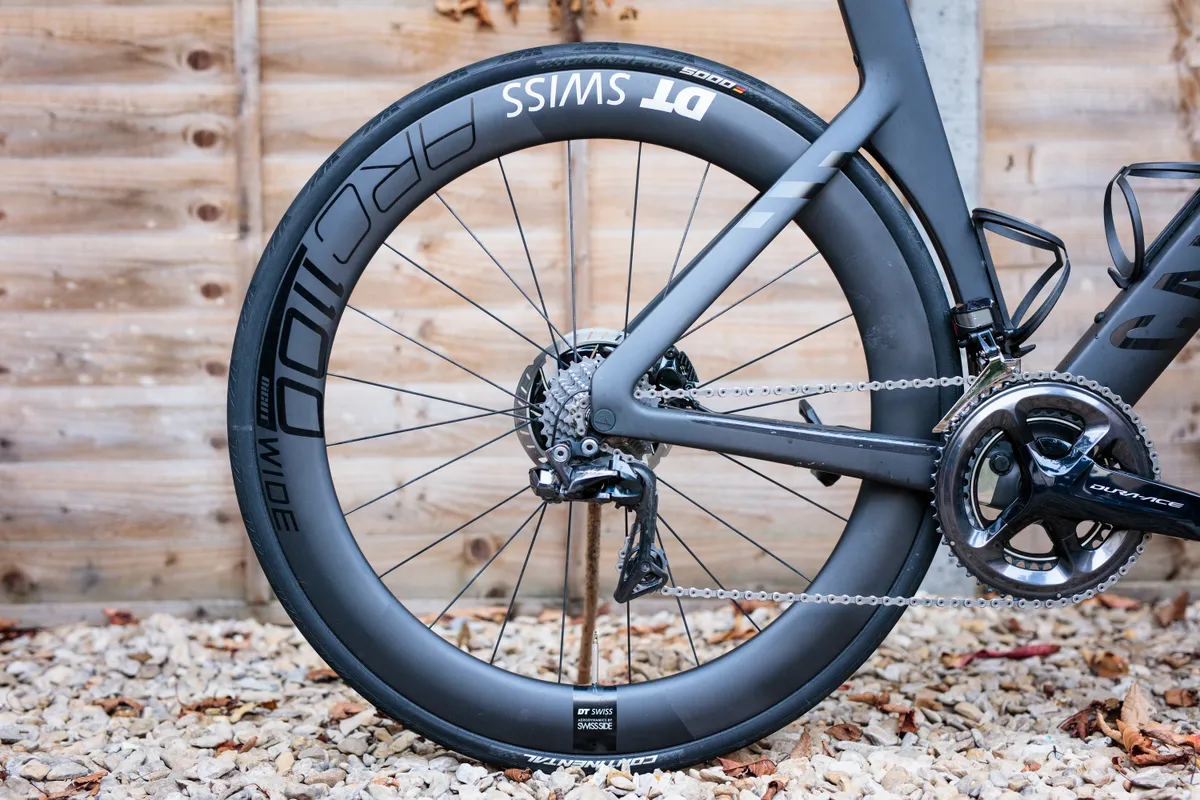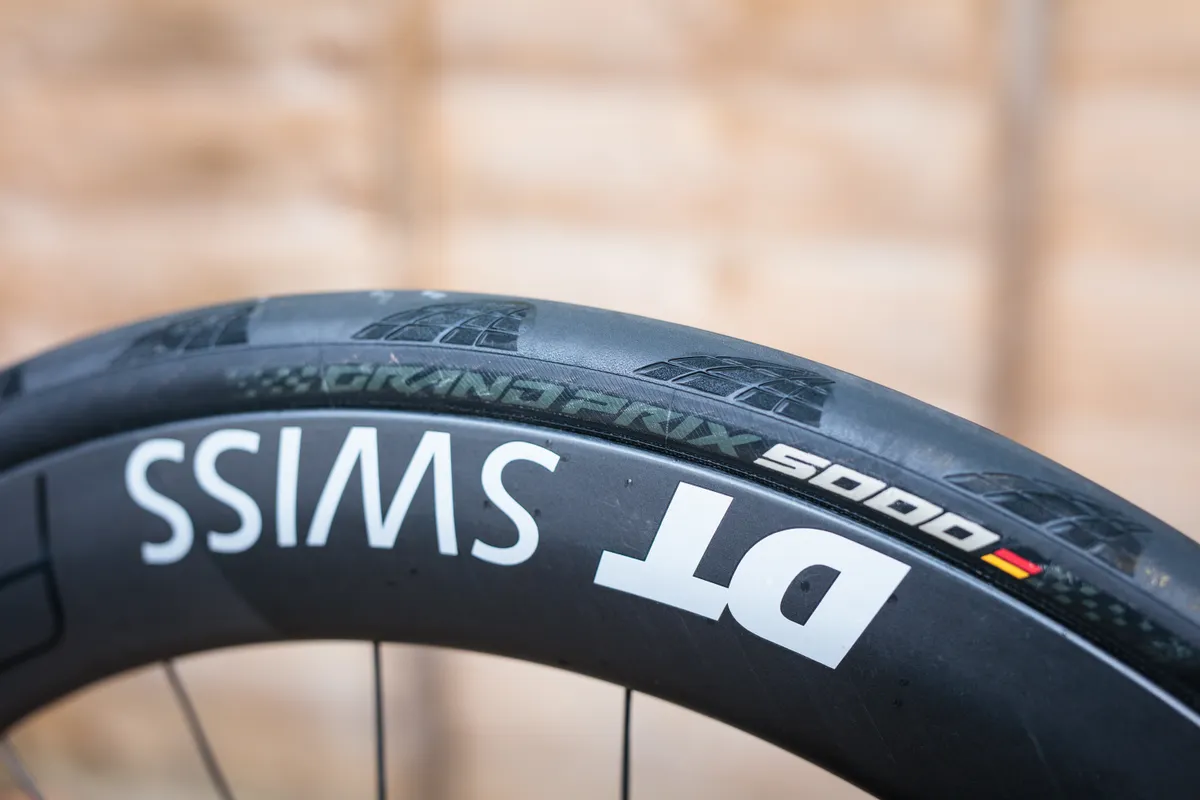The 2021 Canyon Aeroad CFR is the latest, top-of-the-range aero road bike from the German direct-sales giant.
It’s wicked fast, cracking value and offers plenty of clever hidden details. It doesn’t hit the bullseye on every point, but it does get very close.
Building on Canyon’s much-admired Aeroad CF SLX (which was originally released in rim brake form way back in 2014), this new model has been in development for more than four years and Canyon claims it is the “fastest race bike on the market.”
Unlike some companies that are going down the route of converging their aero and climbing bikes into one do-it-all bike, most notably Specialized with the new Tarmac SL7, Canyon has gone almost all-in on aerodynamic efficiency with the 2021 Aeroad.
That doesn’t mean it’s heavy though – this size medium weighs 7.3kg with bottle cages and the Garmin mount, but without pedals. Canyon clearly thinks that sacrificing a few hundreds grams for better aerodynamics is worth it though, and you won’t find me arguing with that.
Frame, set and match
From the outside, the changes versus the previous Aeroad are subtle, and that’s perhaps no bad thing. Although the old Aeroad is pretty long in the tooth now, it’s still a great bike and was still being ridden as recently as this year’s Tour de France.
For the new model, Canyon has worked with aero experts Swiss Side to do extensive CFD and wind tunnel analysis in an attempt to further optimise every part of the bike.
The most obvious changes are that, overall, the kammtail aerofoil tubes are wider and deeper.
However, Canyon does note that the tubes aren’t actually as deep as the UCI rules allow. Apparently it could have made this bike even more aerodynamic, but it would mean making sacrifices in weight, ride quality and ergonomics.
What Canyon has tried to do is balance the aero features with the fact that, ultimately, we don’t actually ride in bikes in wind tunnels.
The biggest changes, though, have arguably taken place where you can’t see them.
Seatpost and saddle
The Canyon SP0046 seatpost, for example, looks like your typical deep-section aero seatpost from the outside. What you’re actually looking at though, is effectively a much smaller, D-shaped seatpost surrounded by a hollow carbon ‘shroud’.
Canyon says this allows it to be simultaneously lighter, more comfortable and more aerodynamic than the previous Aeroad seatpost.
The seatpost clamp is located further down the back of the seat tube, allowing a greater amount of seatpost flex.
It’s in an easy location to access with a standard Allen key and I didn’t experience any issues with slippage or adjusting the seatpost height.
My only concern would be that it’s in a prime location to get soaked with road spray. Canyon has included a little rubber cover to protect it from this (which did the job just fine during testing), but you’ll just need to be careful not to lose it.
I’m not a fan of the Selle Italia SLR Lite saddle, though. At 192g, it’s decently light, but I didn’t get on with the shape or minimal padding at all, even on short rides. The smooth cover and flat profile also meant I tended to slip around on it while trying to put the power down.
Saddles are personal, and there will be some who love this one, but I’d argue it’s old-fashioned, long and narrow shape (275mm x 131mm) is at odds with the aggressive nature of a bike like this.
A shorter, wider and more progressively shaped saddle, perhaps with a cutout to relieve soft tissue pressure – like those seen on most other recent aero road bikes – would seem a much better fit.
Anyway, swapping to a more familiar saddle (a Giant Fleet SL) allowed me to assess the rear end comfort independently of any fit issues, and I can confirm that the seatpost and relatively large rear tyre (more on this later) make the Aeroad CFR very smooth at the back for a proper aero race bike.
Canyon CP0018 Aerocockpit
Up front, there are even bigger changes.
The new Aeroad CFR uses a proprietary, quill stem-esque system called the CP0018 Aerocockpit.
This fully integrates the cables for improved aerodynamics and offers the ability to adjust the handlebar height up and down by 15mm in 5mm increments, without ever having to cut the steerer tube or run spacers above the stem.
The downside is that it means this bike is only compatible with this handlebar system. If you don’t like it, that’s tough.
Canyon has adjusted the geometry of the new Aeroad to make it slightly less aggressive and bring it in line with Canyon’s lightweight road bike, the Ultimate. However, that 15mm of height adjustment is all you get, so if you want a higher handlebar position, you’re out of luck there too.
Like most other bikes with fully integrated cables, replacing the headset bearings will mean disconnecting all of the cables.
The handlebar has another trick up its sleeve, though.
To make the bike easy for Canyon to ship and for you to travel with, the wings of the handlebar are removable. There are two screws on the underside of the handlebar, and once removed the wings simply slide in and out.
Canyon has also made the wings long enough to afford 40mm of overall handlebar width adjustment (20mm on each side), meaning you can choose a narrower cockpit for better aerodynamics or a wider one for better leverage.
On this size M, as well as the size L, you can choose between having the handlebar set at 430mm, 410mm or 390mm, centre to centre.
On sizes 2XS, XS and S, the handlebar has a narrower range of 370mm to 410mm, while on the largest 2XL size it’s slightly wider at 410 to 450mm.
Despite all of these changes, Canyon says the new cockpit is actually 37g lighter than the previous integrated handlebar found on the old Aeroad CF SLX.
It also claims fully internal cable routing can save up to 3 watts compared to externally routed cables.
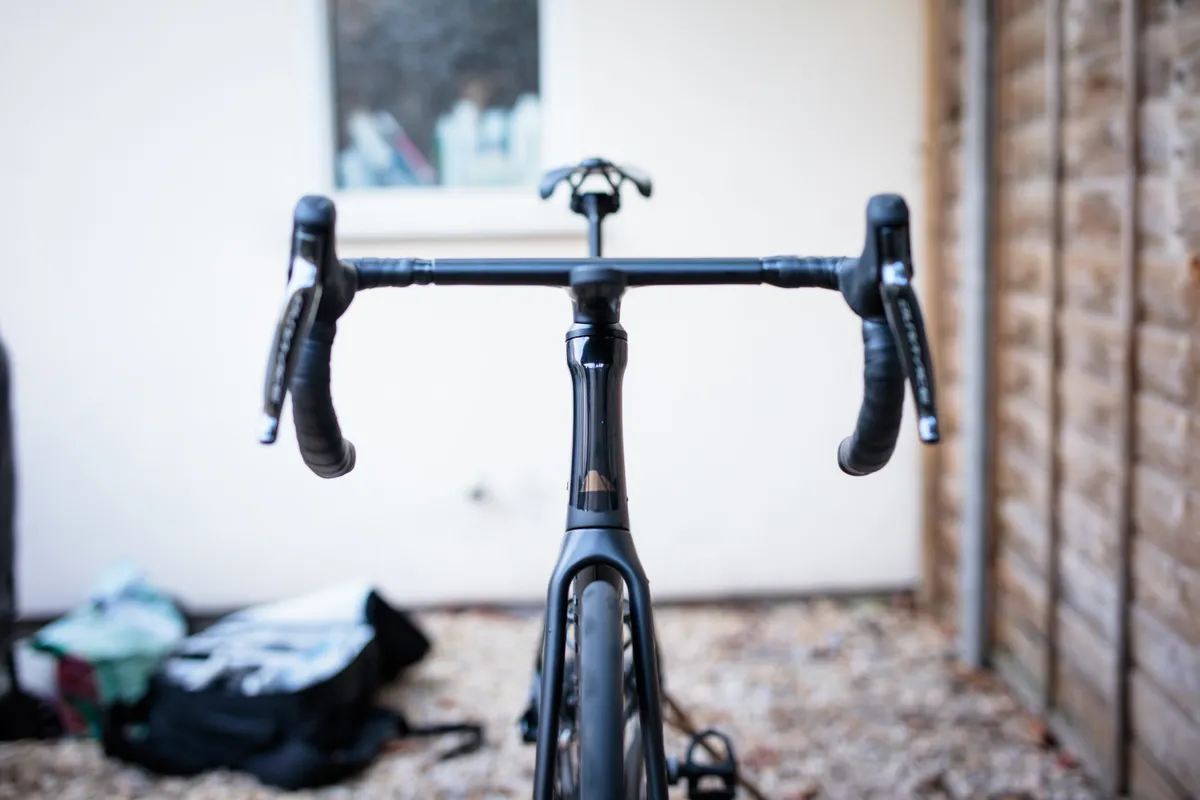
The integrated stem does mean that reach isn’t adjustable, but Canyon does stress customers will be able to request a different length cockpit at the point of purchase, if required.
But – as with most integrated handlebars on the market – not everyone will be able to get exactly what they want. The longest stems only come with the widest handlebars and vice versa, for example.
Ultimately, it’s worth considering that body position is the largest determinant of your overall system (bike plus rider) drag.
Buying an aero bike with a fully integrated cockpit like this, versus a two-piece design that may give up something in aerodynamics and sleek looks for a more tuneable fit, is therefore one of the key decisions to make.
Exactly how much faster and lighter is it?
The net effect of all these changes is that the new Aeroad CFR frameset is 168g lighter than the outgoing CF SLX version, according to Canyon. That includes the seatpost, cockpit and small parts such as the seatpost and steerer tube clamps.
Looking solely at the frame, the new Aeroad CFR weighs a claimed 915g versus 1,010g for the old Aeroad CF SLX. The new fork is apparently 20g lighter than the outgoing model.
As a complete bike with two bottles and a rider, Canyon claims the new Aeroad is an average of 5.4 watts more aerodynamically efficient at 45kph than the old Aeroad CF SLX, across a range of yaw angles from -20 to +20 degrees.
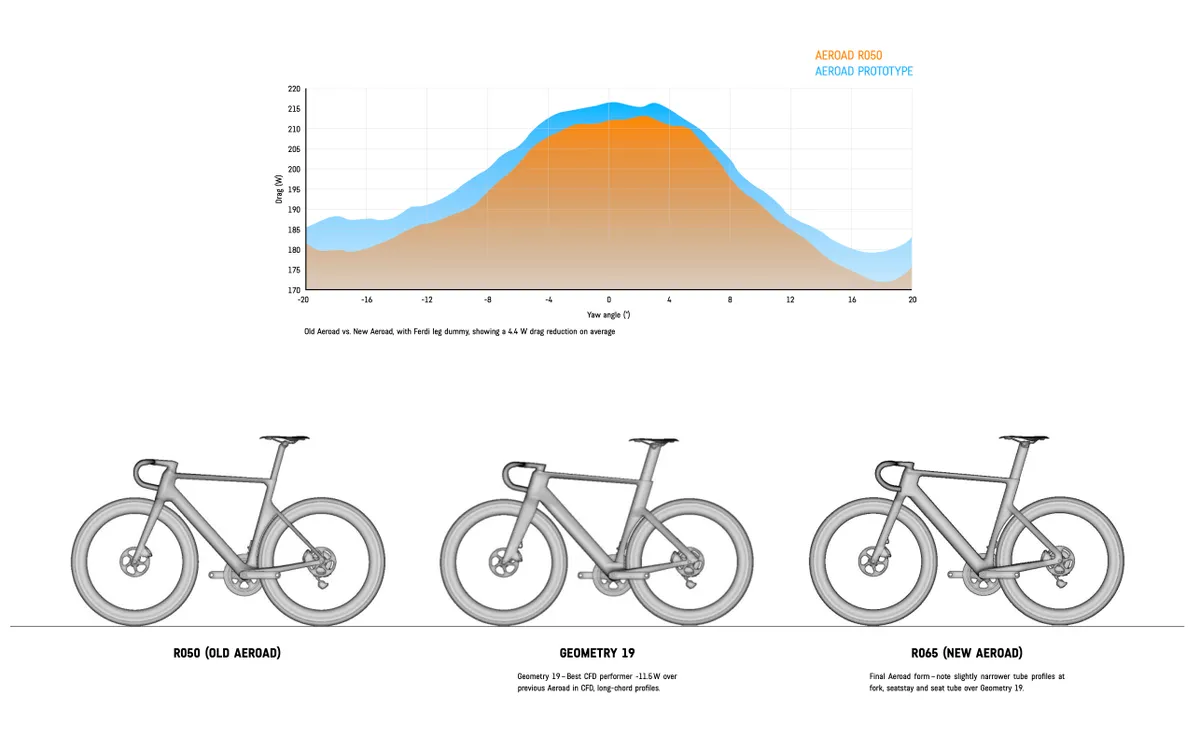
Canyon also claims that, under certain wind conditions, the bike will even experience a ‘sailing effect’, where the drag drops significantly and you’re essentially getting pushed along.
I’ll happily admit that it sounds too good to be true, but Canyon’s engineers are adamant that it’s there, even at lower yaw angles, though they acknowledge it will only really be noticeable at higher yaw angles.
There’s some debate around the actual yaw angles a road cyclist will typically experience while riding, but Canyon says it designed the new Aeroad based on real-world wind data from Germany and its extensive aero testing with Swiss Side, and it’s confident these claims stand up to scrutiny.
Aeroad CFR build
This particular model is part of the top-spec CFR range. CFR stands for Canyon Factory Racing, and is Canyon’s halo branding for it’s Über-bikes.
Like with Specialized and its S-Works brand, this basically means it uses the lightest, stiffest, and most expensive carbon fibre to bring us the pinnacle of what Canyon can produce right now.
The result is that the Aeroad CFR frameset is, according to Canyon, 14 per cent stiffer than the outgoing Aeroad CF SLX.
In typical Canyon style, the Aeroad CFR is available with a ‘stealth’ paint job. Thankfully (because I think matte-black is dull), there’s also a ‘tinted chrome’ version which looks a little more snazzy, but it’s only an option for this Dura-Ace build or as a frameset.
Below the CFR tier sits the CF SLX and CF SL tiers, which use the same tube shapes, but have different carbon layups, meaning they are slightly heavier and have slightly lower stiffness to weight ratios as a result.
These lower tiers also have more affordable builds, as well as other paint job options. Head over to our launch story on the new Canyon Aeroad for the full rundown on all of the various builds and price points.
This particular build costs £7,699 / €7,499 / $7,599 / AU$11,749 and features a Shimano Dura-Ace R9170 Di2 groupset and 62mm DT Swiss ARC 1100 Dicut carbon wheels.
That’s substantially cheaper than many of its rivals with similar builds, such as the Trek Madone SLR, Cannondale SystemSix Hi-Mod and Cervélo S5. Only the Cube Litening C:68X can really match it for value among the big name brands.
Of course, Canyon is a direct-sales-only brand. You can’t walk into a bike shop and ogle one of these, like you can with the others.
It’s worth mentioning too that this Aeroad CFR build is specced with the outgoing version of the wheelset, rather than the new DT Swiss ARC 1100 Dicut wheels.
It also comes with a 25mm Continental GP5000 clincher tyre on the front matched with a 28mm version of the same tyre at the rear. Canyon says this offers the best balance of aero and comfort, but I’ll talk a bit more about this later.
After the ride
First things first, this is a very fast bike.
When you get on a good stretch of road, your average speed noticeably increases for the same effort compared to more standard, semi-aero road bikes like my Giant TCR long-term test bike, even around the 30kph mark most amateurs like myself tend to ride at.
As the deep, stout tubes suggest, it’s also an incredibly stiff and efficient feeling bike. Whether you’re sprinting, climbing or ploughing through fast corners, you get a real sense of purpose out of it and it doesn’t waste any of your effort.
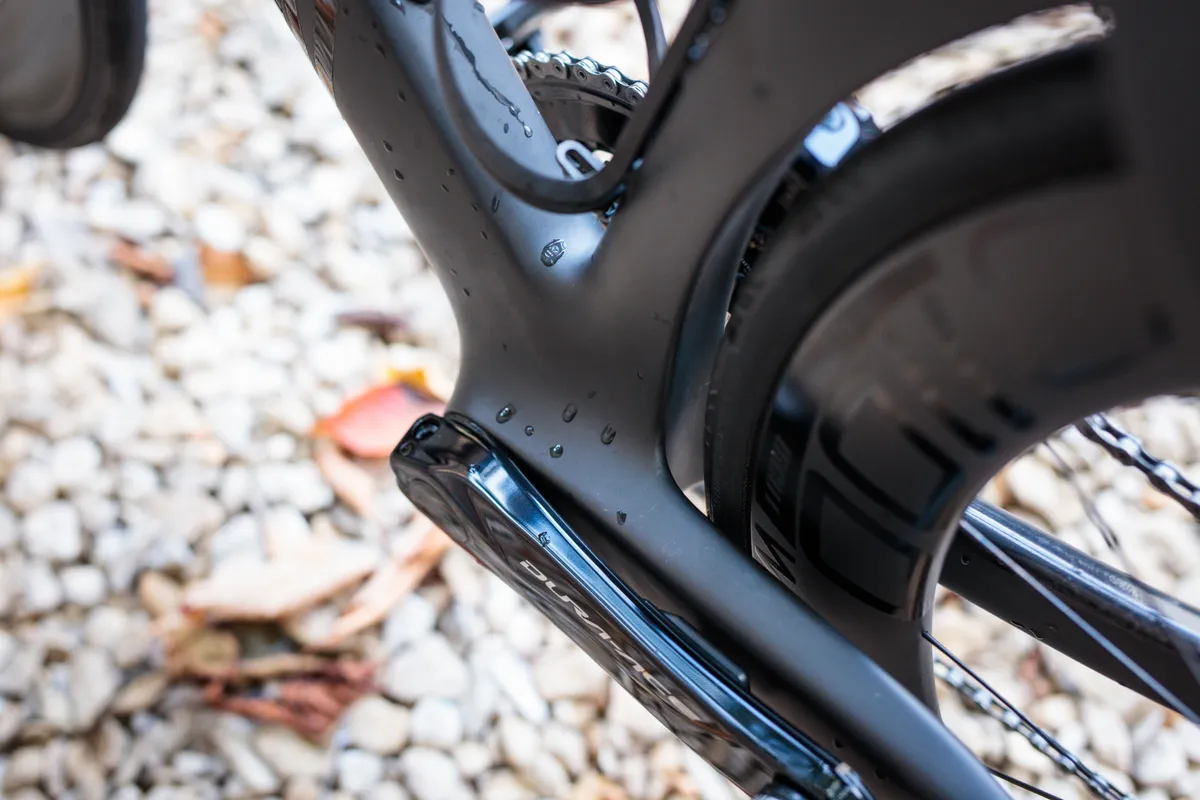
It’s very nice to go around roads you’re quite familiar with and notice yourself picking up a lot of personal records on Strava. This doesn’t last forever, obviously, but it’s fun while it does.
This isn’t a bike designed specifically for the climbs, but with a competitively light build and an ultra-stiff frameset it’s perfectly capable there too. It’s particularly good on longer, shallower climbs – especially if you’re climbing in a group of riders at higher speeds – where the aerodynamics of the bike still make a significant difference.
Likewise, it’s a rocket going downhill. Canyon was smart to spec 160mm disc brake rotors front and rear because you’ll need them.
The deep frame tubes and tall rims do mean it can be a bit of a handful in crosswinds, but as long as you pay attention it’s no problem, and it really flies in a tailwind.
Although I’m not always a huge fan of fully integrated handlebars, this one does have a very comfortable drop shape, and the aero tops aren’t so big that they’re uncomfortable to hold either.
There’s also no denying it looks incredibly slick too. Them GPS computer mount is a nice, high-quality extra, sold separately through the Canyon website.
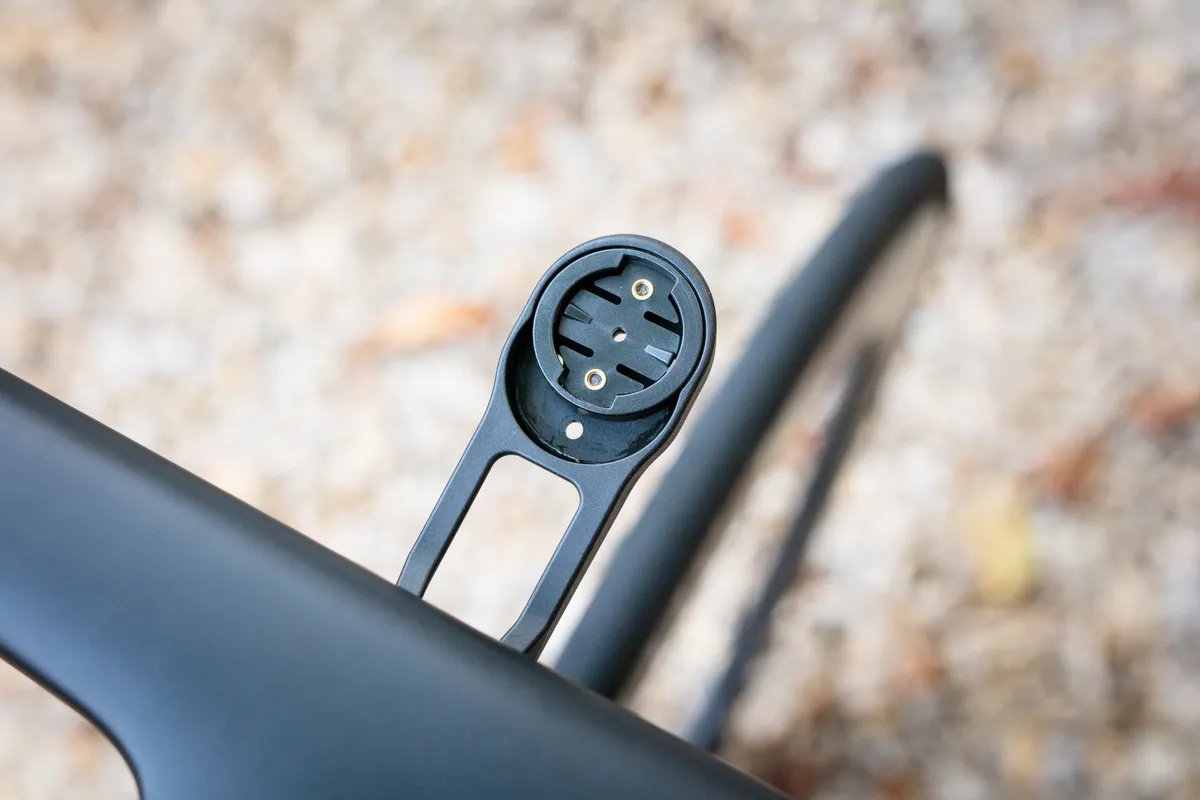
I also very much like the fact that you can change the width of the handlebar, because the fixed fit parameters are usually my biggest gripe with these types of handlebars.
The Shimano Dura-ace Di2 groupset is fantastic, as you’d expect, and the 52/36t chainset and 11-28t cassette represents a decent spread of gears for a race bike like this.
It’s also great to see a Shimano FC-R9100-P power meter included as stock. It’s something of a recent trend for bike brands to spec power meters as standard on top-end bikes, and it adds a lot of value to the build.
On the rough stuff
On the other hand, the Aeroad is a bit unbalanced on rough roads, and I think at least some of the blame lies with the wheelset.
To be specific, the front wheel has a relatively narrow 17mm internal rim width, which means the 25mm tyre on it comes up relatively small, bang-on 25mm when inflated.
The rear wheel, however, has a 20mm internal width, meaning the 28mm tyre specced on it comes up relatively large – around 29.5mm to 30mm, depending on what pressure you’re running.
Thanks to that larger tyre and the innovative seatpost design, it’s very smooth at the back.
But the smaller front tyre (and the relatively high inflation pressure that necessitates), combined with the super-stiff fork, means the front end can be chattery over rough roads. It has a tendency to bounce over imperfections, loose stones or cracks in the road, rather than absorb them and keeping the tyre planted.
Fortunately, the frame has clearance for up to 30mm tyres, so you could swap in a slightly larger tyre up front to negate this. Doing so would mean sacrificing a little on the aero side because the wheelset is optimised for 25mm tyres, but for most people that’s probably a fair compromise and an upgrade that won’t cost the earth.
It’s a puzzling situation because the new version of this wheelset – which features 20mm internal width rims front and rear, alongside redesigned rim profiles, new spokes and improved hubs with ceramic bearings – is already shipping and we’ve even had a set in to test, so I’d expect the outgoing wheelset to not actually be available for much longer.
Having tried the new wheels in this frameset (with the same tyres), I do think the wider front rim makes a pronounced difference to the ride quality of the front end on broken roads.
It increases the inflated width of the front tyre to around 27mm and allows you to use slightly lower pressures, which in turn helps the bike absorb road imperfections much more effectively.
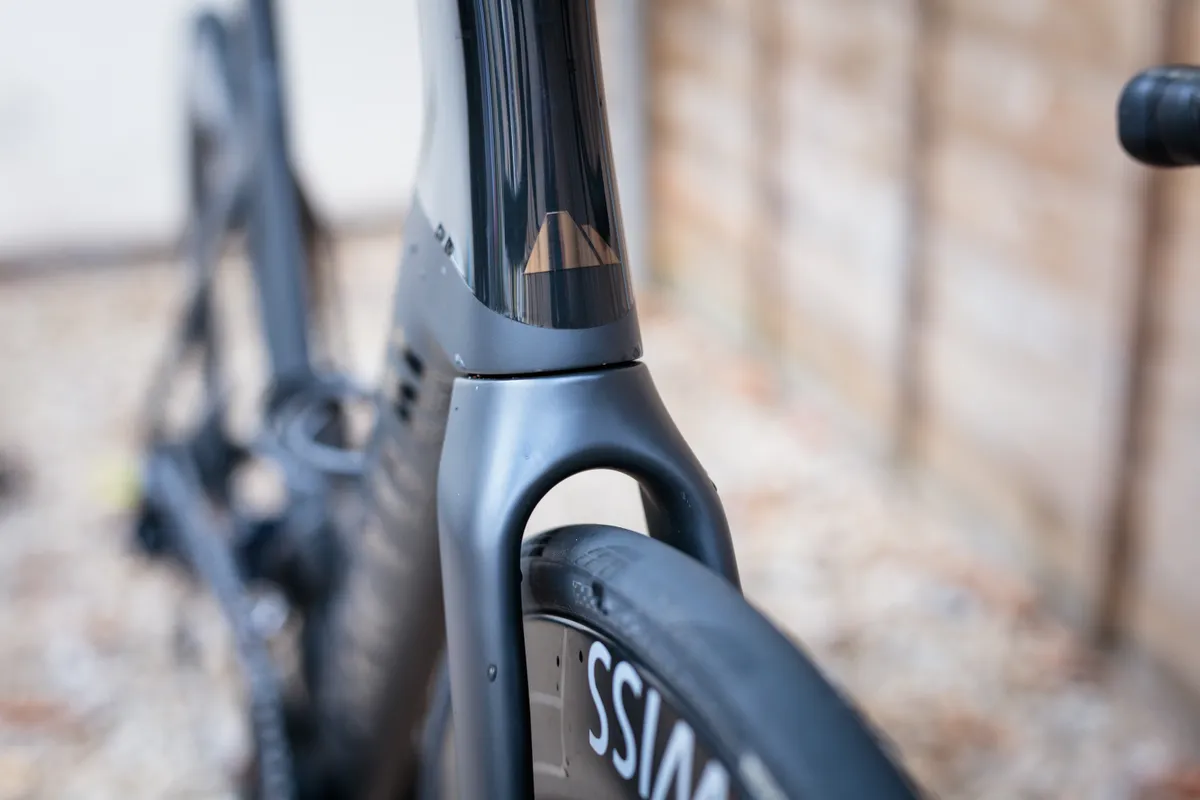
Alternatively, as the specced wheels are tubeless-ready, switching to a tubeless setup could also allow you to use lower front tyre pressures (without risking pinch flats, as you would with the clincher and inner tube setup), and would likely go some way to solving this problem without the aero penalty associated with swapping to a larger tyre.
You’re not going to have a problem with the standard spec if you largely ride on decent roads, but otherwise it’s something to consider.
Canyon Aeroad CFR Di2 overall
In summary, the new Aeroad is slightly lighter and slightly faster than its predecessor – a bike we already rated as very fast – and it’s also still a fair bit cheaper than much of the competition. As usual with Canyon, you’re getting a lot of bike and a lot of spec for your money.
£7,699 is obviously not cheap by any measure, but it does represent good value compared to the competition – some of this year’s launches with similar specs are closer to £10,000.
The CFR frameset and subsequent builds are also competitively light for a proper aero road bike, and though we know aero trumps weight most of the time, that essentially means you don’t even need to worry about it.
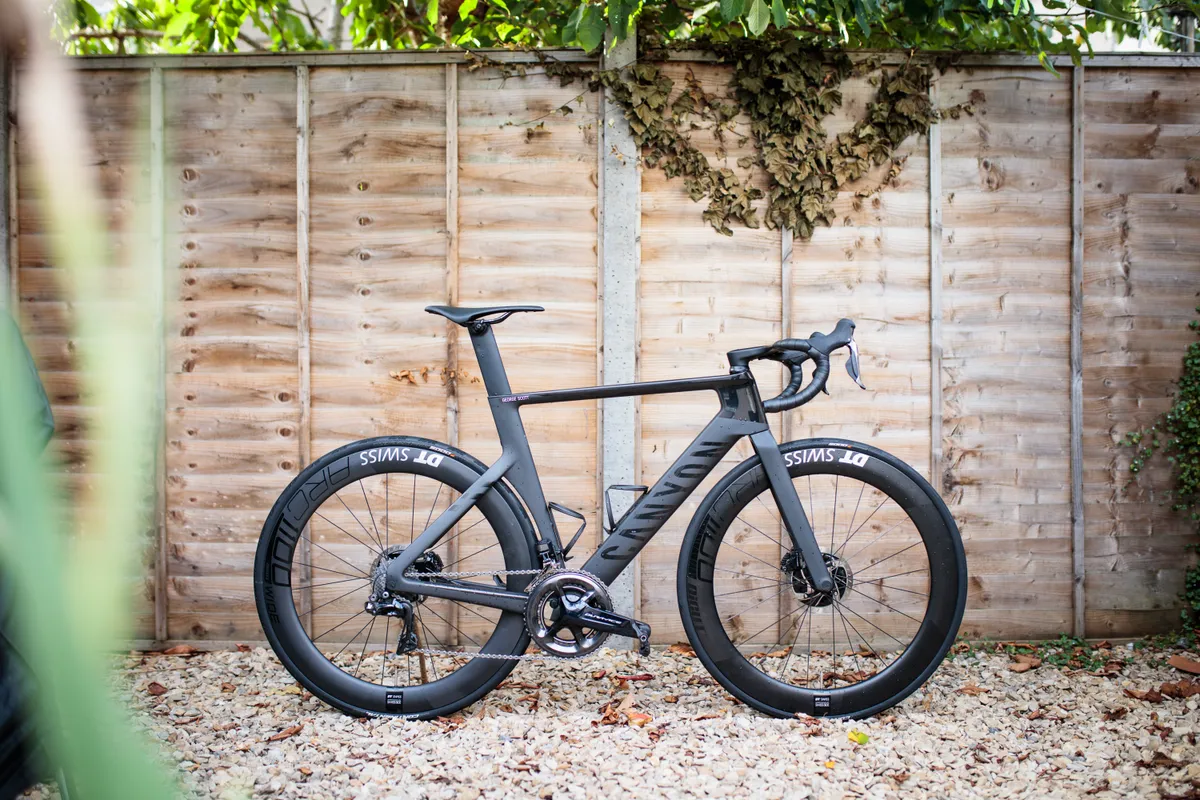
In general terms, it’s a very fast bike. If riding from A to B as quickly as possible or sprinting for town signs or finish lines are your goals, this is the kind of bike you want.
So in that sense, what’s not to love?
Well, if you’re happy with the fit parameters of the integrated handlebar and you tend to ride on reasonably good roads, then there really is very little to complain about – especially at this price.
For those who live somewhere where the roads are generally rubbish (like here in the UK), changing to a larger front tyre, or a tubeless setup, is likely a good idea.
Product
| Brand | canyon |
| Price | 11749.00 AUD,7499.00 EUR,7699.00 GBP,7599.00 USD |
| Weight | 7.3000, KILOGRAM (Medium) - With two bottle cages and included GPS computer mount. |
Features
| Fork | Canyon FK0060 |
| br_stem | Integrated (100mm) |
| br_chain | Shimano Dura-Ace HG901 |
| br_frame | Canyon Aeroad CFR |
| Tyres | Continental GP5000 clincher, 25mm front / 28mm rear |
| br_brakes | Shimano Dura Ace Ice Tech Freeza Centre-Lock |
| br_cranks | Shimano FC-R9100-P, 172.5mm |
| br_saddle | Selle Italia SLR Lite |
| br_wheels | DT Swiss ARC 1100 Dicut 62 DB |
| br_shifter | Shimano Dura Ace Di2 9170 |
| br_cassette | Shimano Dura-Ace R9100, 11-28T |
| br_seatpost | Canyon SP0046 |
| br_handlebar | Canyon CP0018 Aerocockpit |
| br_bottomBracket | BB86 |
| br_availableSizes | 2XS, XS, S, M, L, XL, 2XL |
| br_rearDerailleur | Shimano Dura Ace Di2 9150 |
| br_frontDerailleur | Shimano Dura-Ace Di2 9150 |

